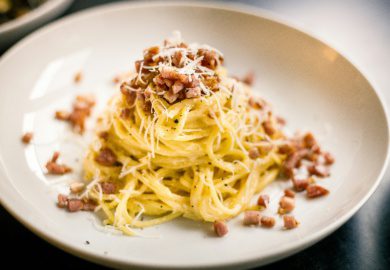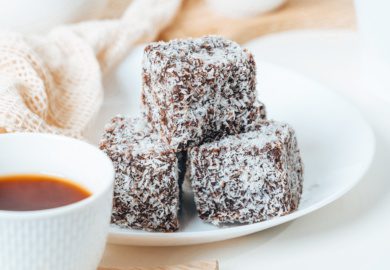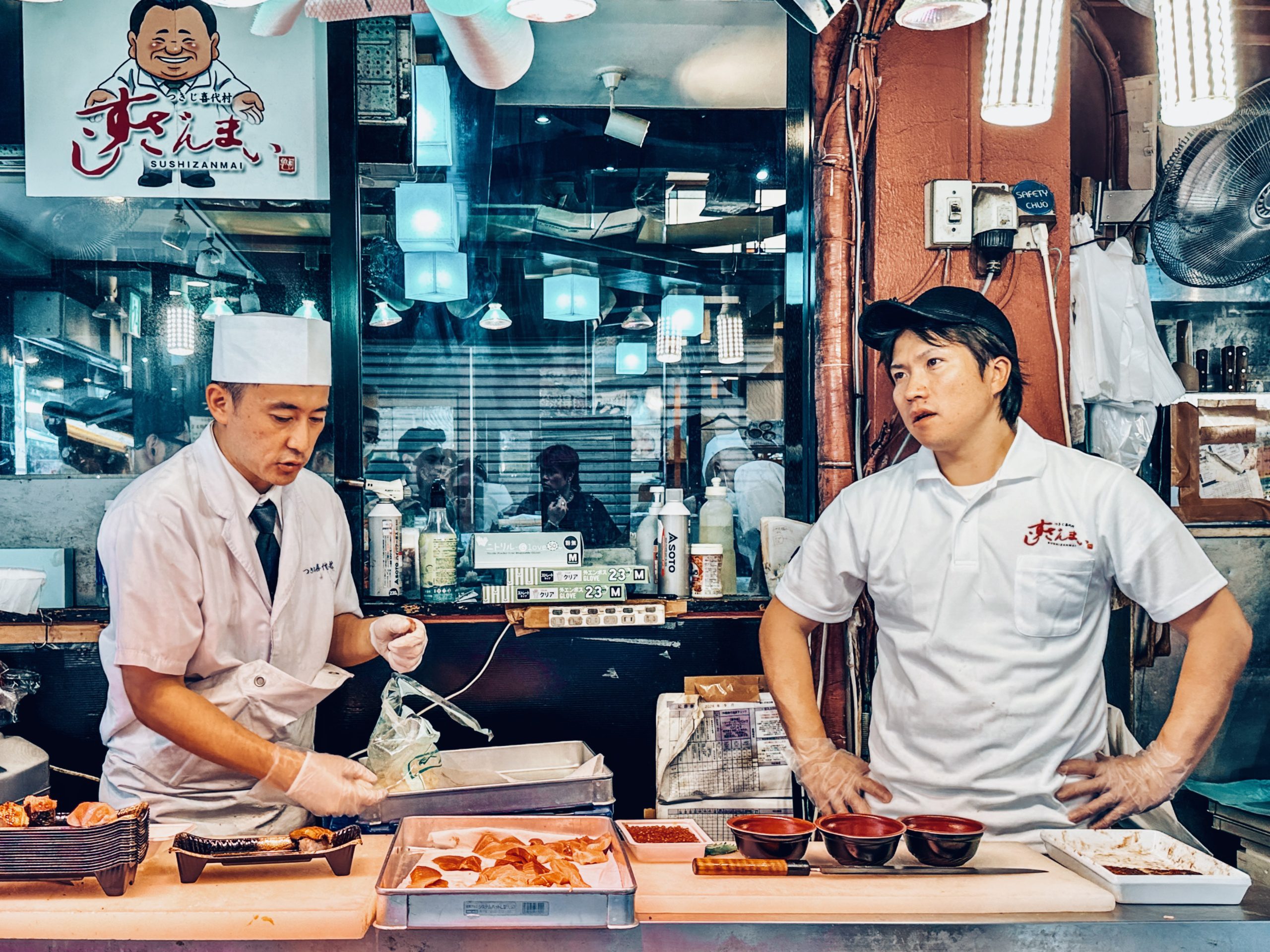
Tsukiji Fish Market in Tokyo: A Food Traveler’s Guide
Traveling to Tokyo and looking for a Tsukiji Fish Market guide? We’ve got you!
When it comes to experiencing Tokyo’s vibrant culinary scene, Tsukiji Fish Market is an essential stop. While the iconic wholesale fish market has relocated, its outer market remains a bustling hub of activity and flavor.
Explore with local experts! BOOK Tokyo Tsukiji Fish Market Food and Culture Walking Tour or Tsukiji Fish Market Visit and Sushi Making Experience
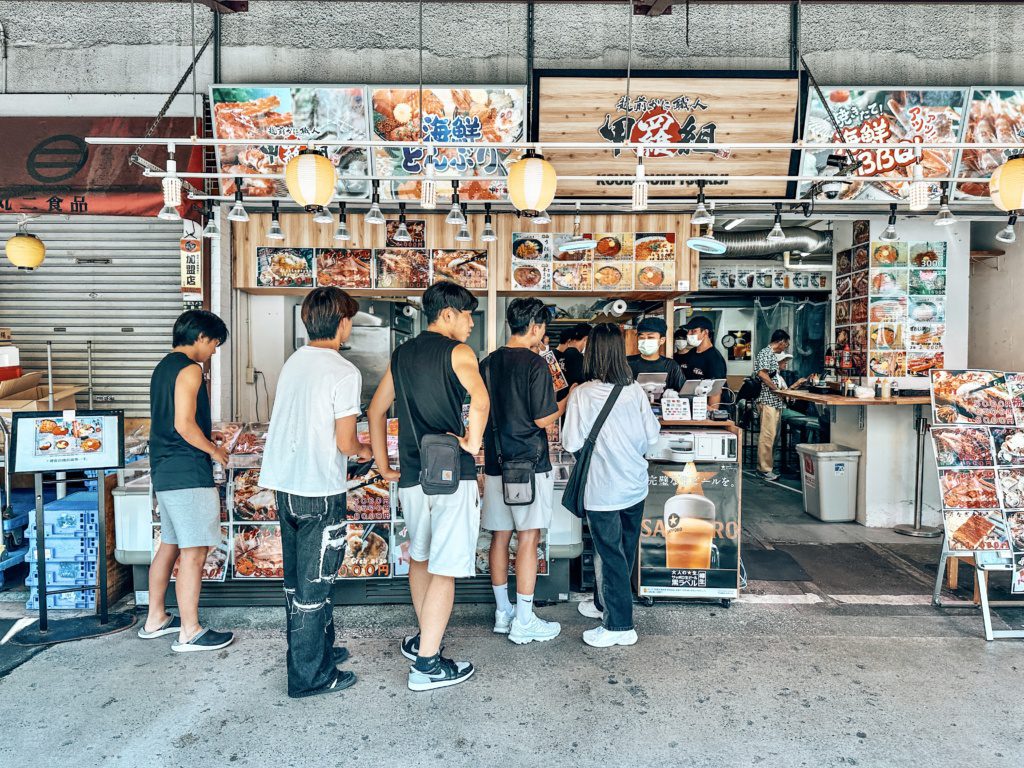
Join us as we explore the best ways to visit, its fascinating history, and the culinary treasures that await you.
The Importance of Fish in Japanese Cuisine
Fish, and particularly tuna, holds a significant place in Japanese cuisine, both for its flavor and cultural importance. It is celebrated in various forms, most notably as sashimi and sushi, where its rich, buttery texture and umami flavor shine.
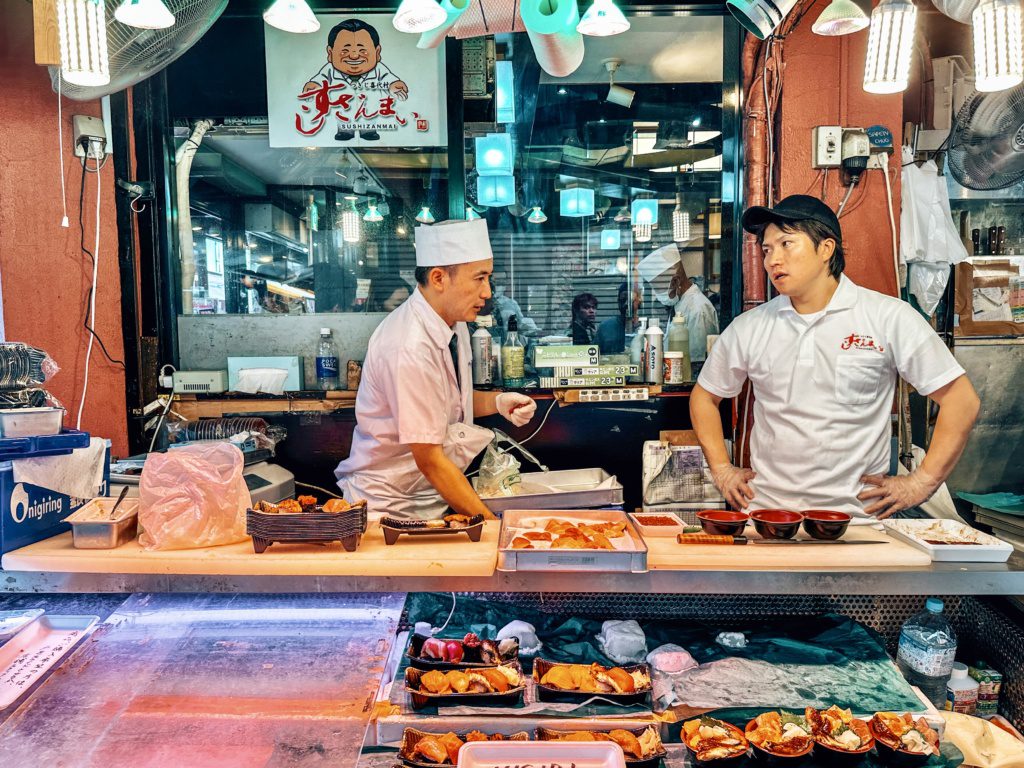
The most sought-after species, like bluefin tuna, are particularly prized for their high fat content, which contributes to their exquisite taste.
Tuna’s culinary significance and the vibrant auction culture not only highlight Japan’s appreciation for seafood but also emphasize the intricate ties between food, tradition, and community.
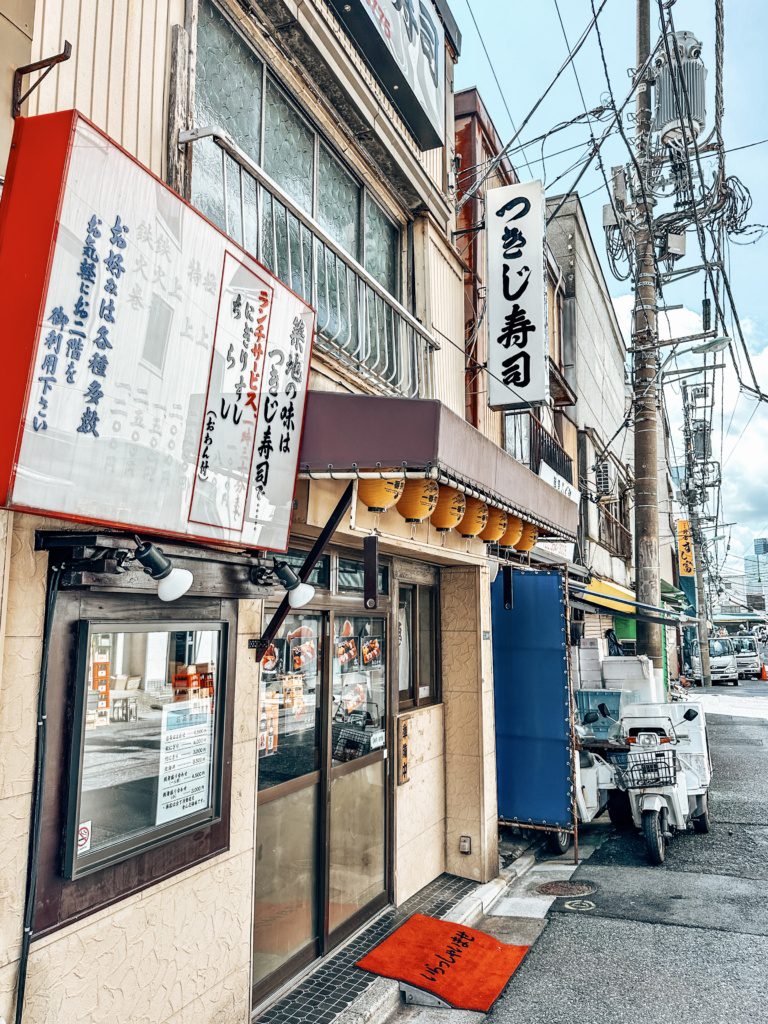
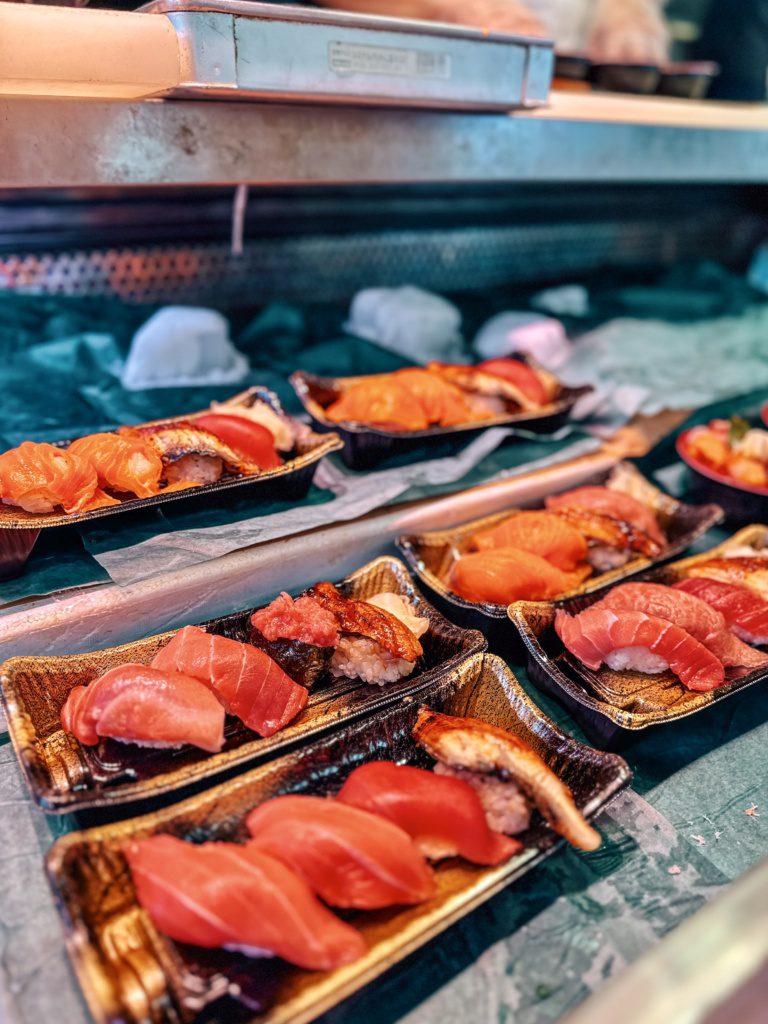
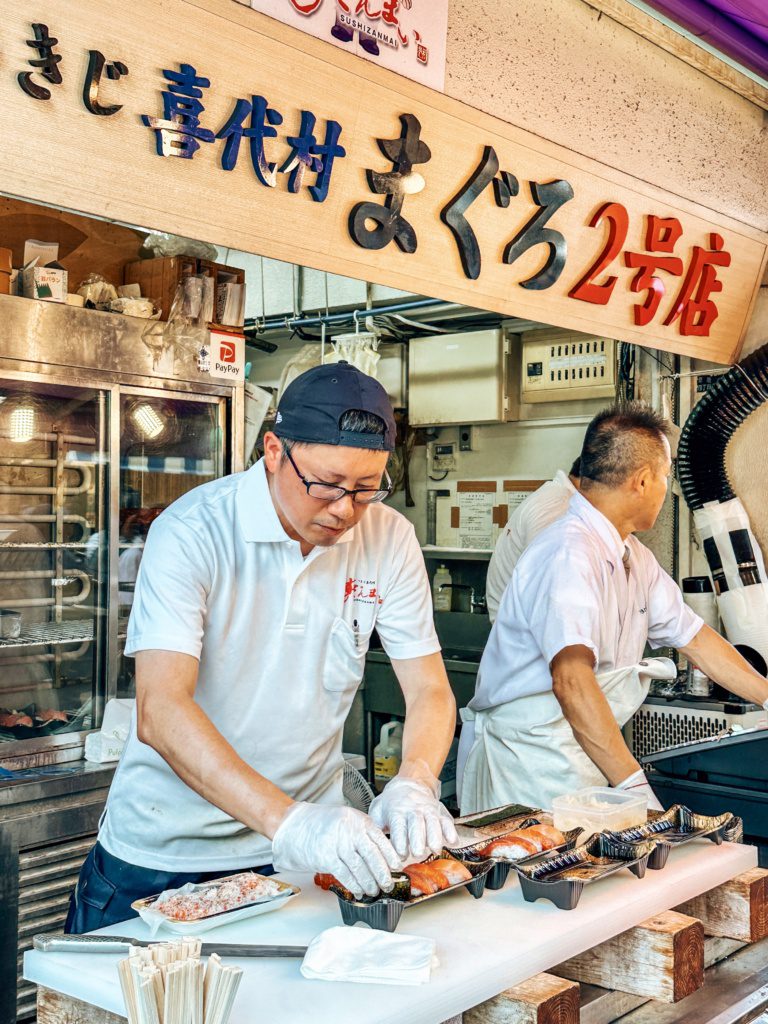
History of Fish Auctions
The history of fish auctions in Japan, especially the renowned Tsukiji and now Toyosu markets in Tokyo, reflects the deep-rooted relationship between seafood and Japanese culinary traditions. These auctions date back centuries, with the modern system evolving in the early 20th century.
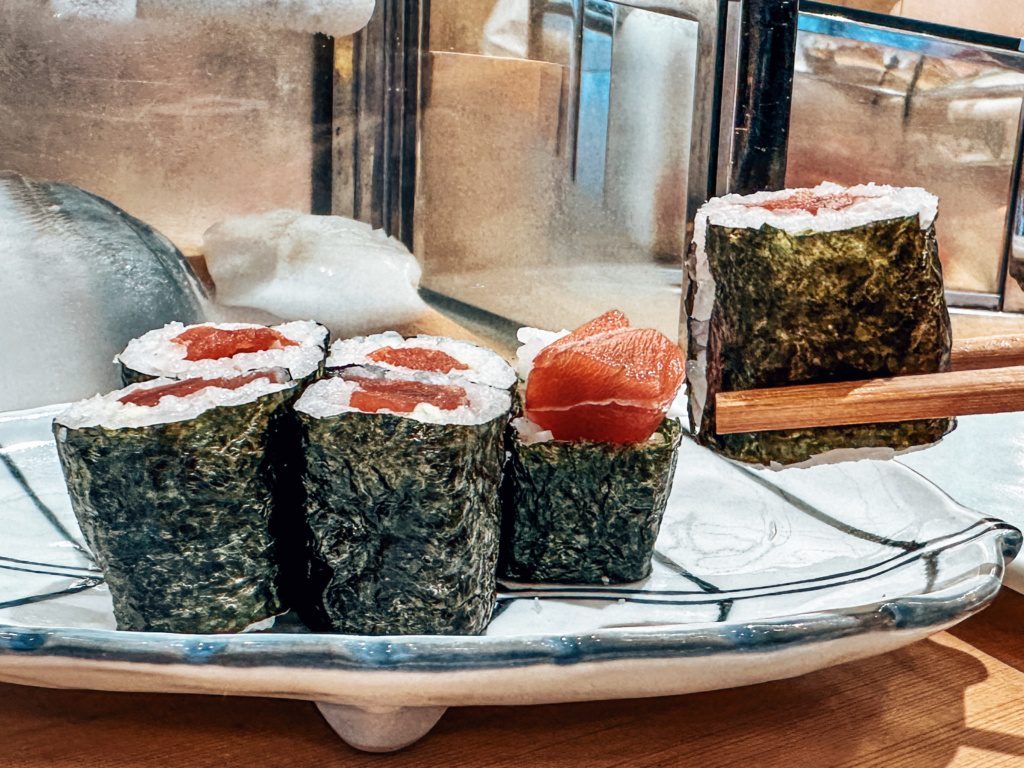
Tuna auctions are particularly dramatic events, where buyers bid on whole fish based on their quality, size, and fat marbling. The first auction of the year often garners significant media attention, highlighting the importance of tuna in both Japanese gastronomy and economy.
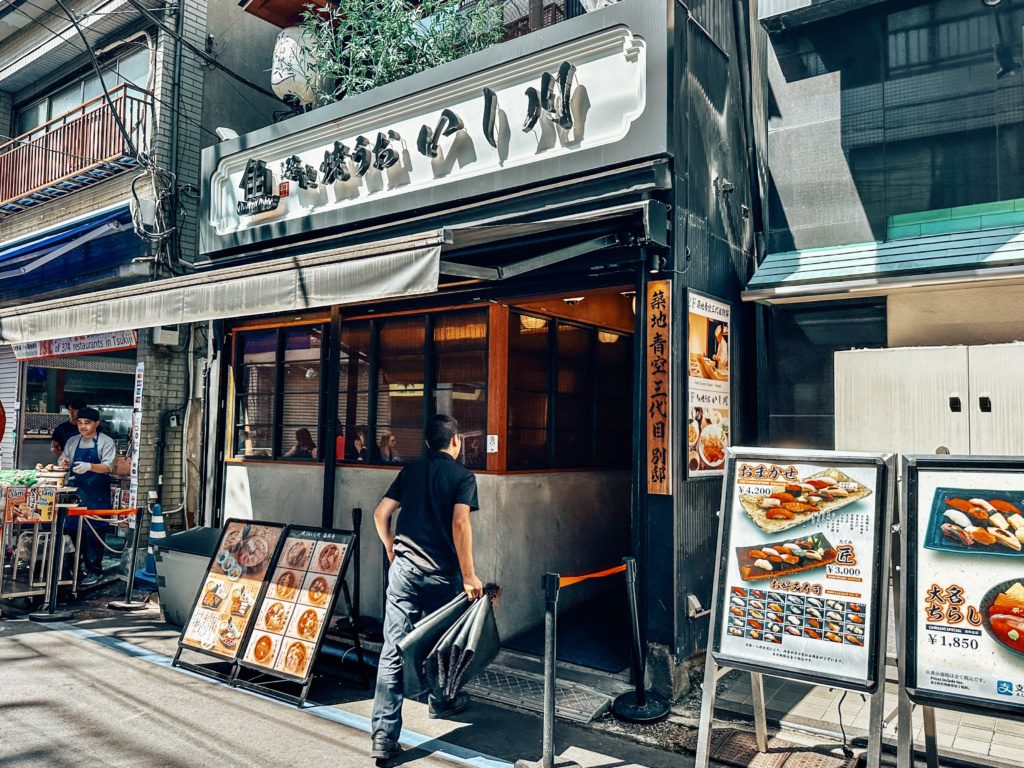
Location and How to Get There
Tsukiji Fish Market is located in the Chuo Ward of Tokyo. To get there, take the Tokyo Metro Hibiya Line to Tsukiji Station (Exit 1) or the Toei Oedo Line to Tsukiji Shijo Station (Exit A1). If you’re in the mood for a scenic walk, it’s about a 15-minute stroll from the upscale Ginza shopping district. Pro tip: the actual name is Tsukiji Outer Market.
You might also like: What is Poke And Why You Won’t Find Poke Bowls in Hawaii , The History of Nikkei Cuisine (And What’s Nobu Got To Do With It)



When to Visit
The market is best visited in the early morning, ideally around 5:00 AM to 9:00 AM, when the energy is at its peak and the freshest catches are on display. Although the tuna auction is no longer held here, the outer market is alive with vendors and bustling with locals and tourists alike.
Hang around till noon or so and indulge in fresh fish lunch of sushi or donburi.
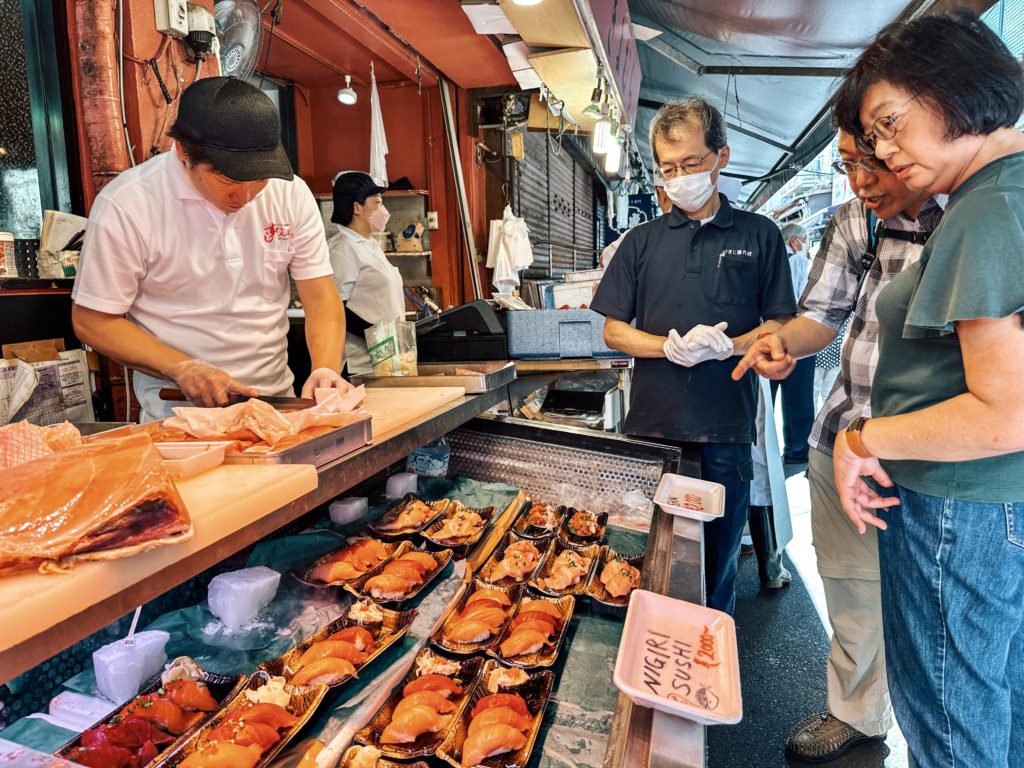
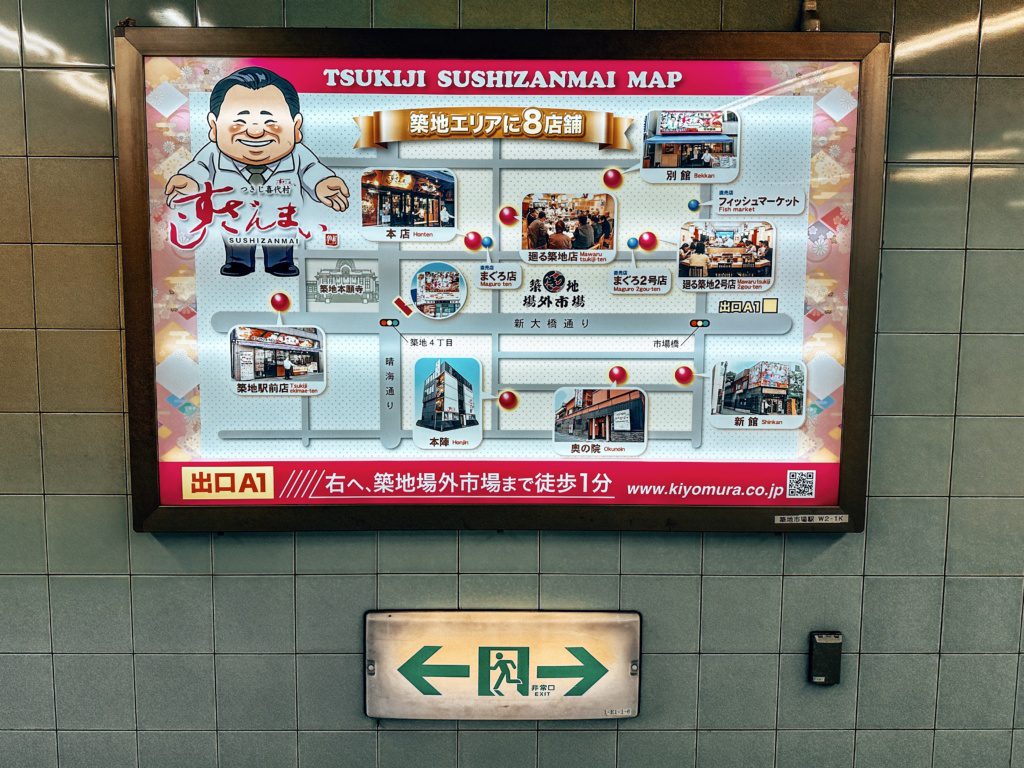
A Brief History of Tsukiji Fish Market
Established in 1935, Tsukiji Fish Market served as the main wholesale fish market for Tokyo. Over the years, it became a cultural icon, renowned for its exceptional seafood and vibrant atmosphere.
In 2018, the inner wholesale market relocated to Toyosu, primarily for modernization and safety concerns. However, the outer market continues to thrive, showcasing a variety of seafood and culinary delights.
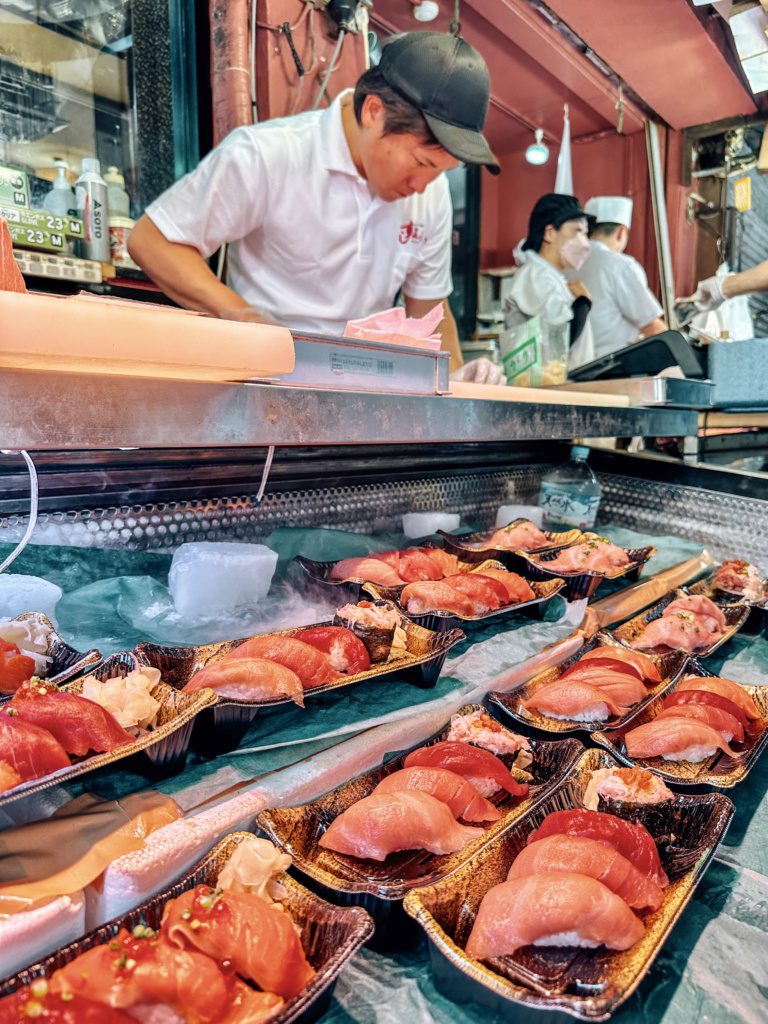
Tsukiji Tuna Auction and Its Relocation
The tuna auction at Tsukiji was famous worldwide, drawing chefs and seafood lovers keen to witness the intense bidding process for Japan’s prized bluefin tuna. The relocation to Toyosu was aimed at improving facilities and food safety regulations.
Despite the move, Tsukiji remains a hotspot for food lovers, offering a glimpse into Japan’s rich seafood culture.
Explore with local experts! BOOK Tokyo Tsukiji Fish Market Food and Culture Walking Tour or Tsukiji Fish Market Visit and Sushi Making Experience
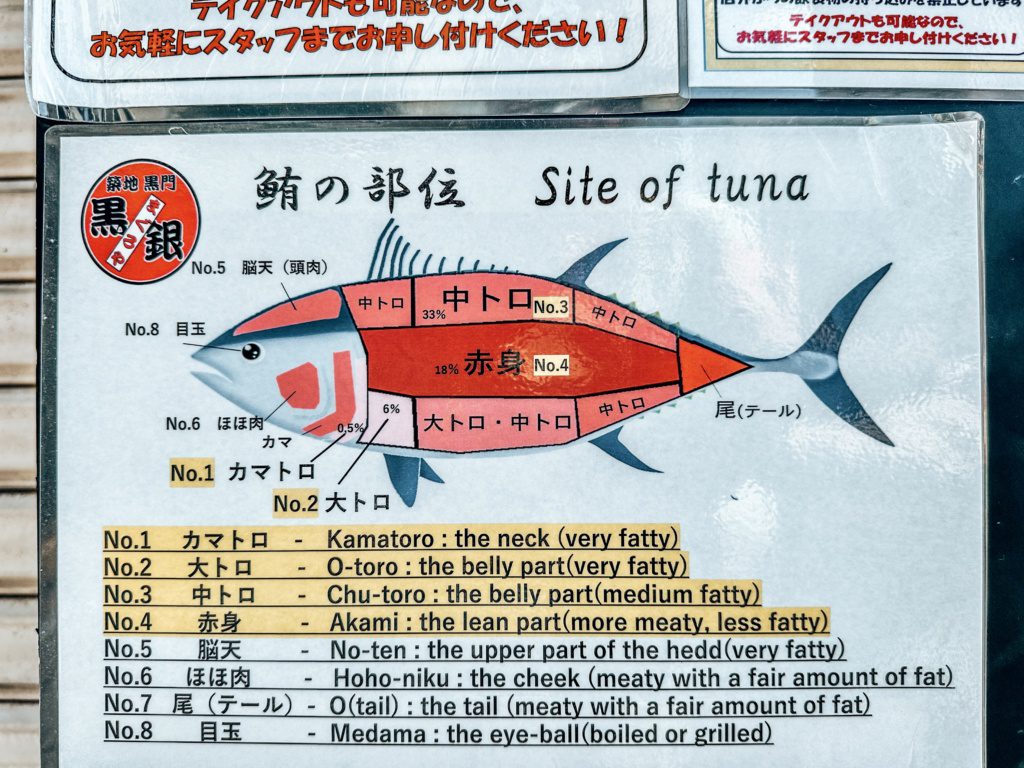
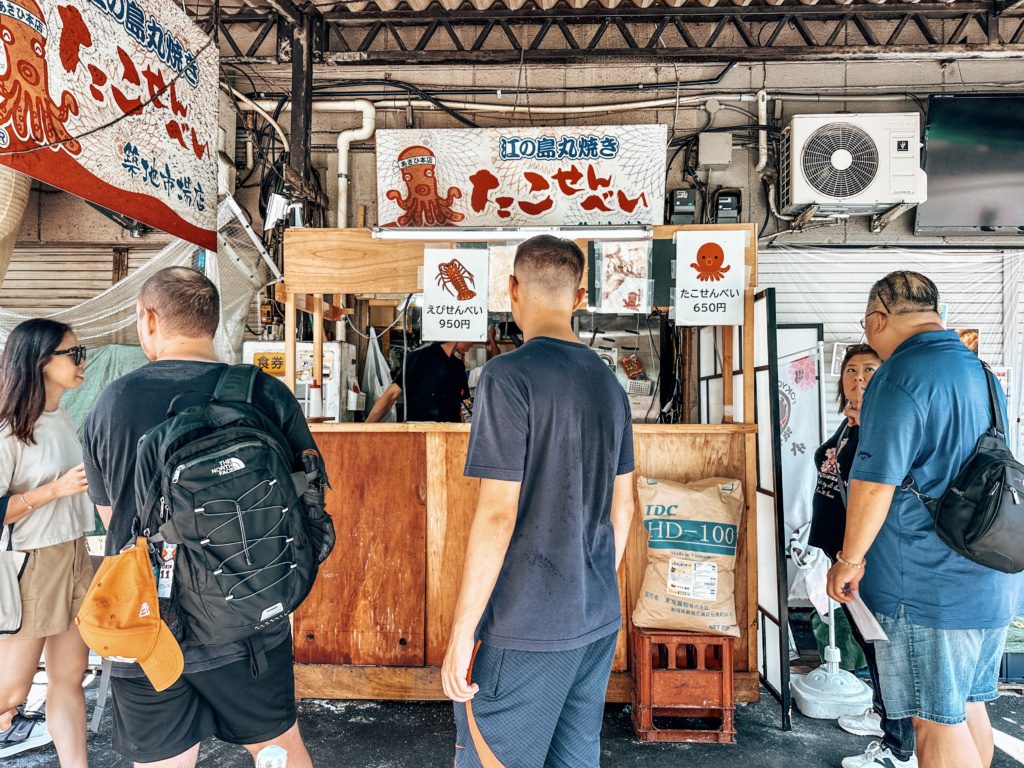
What Foods to Look For
While at Tsukiji, be sure to sample:
- Sushi and Sashimi: Freshly prepared sushi from one of the many stalls or restaurants is a must. Look for high-quality tuna, salmon, and sea urchin.
- Grilled Seafood: Try yakitori-style grilled fish skewers, fresh grilled oysters or grilled shellfish from street vendors.
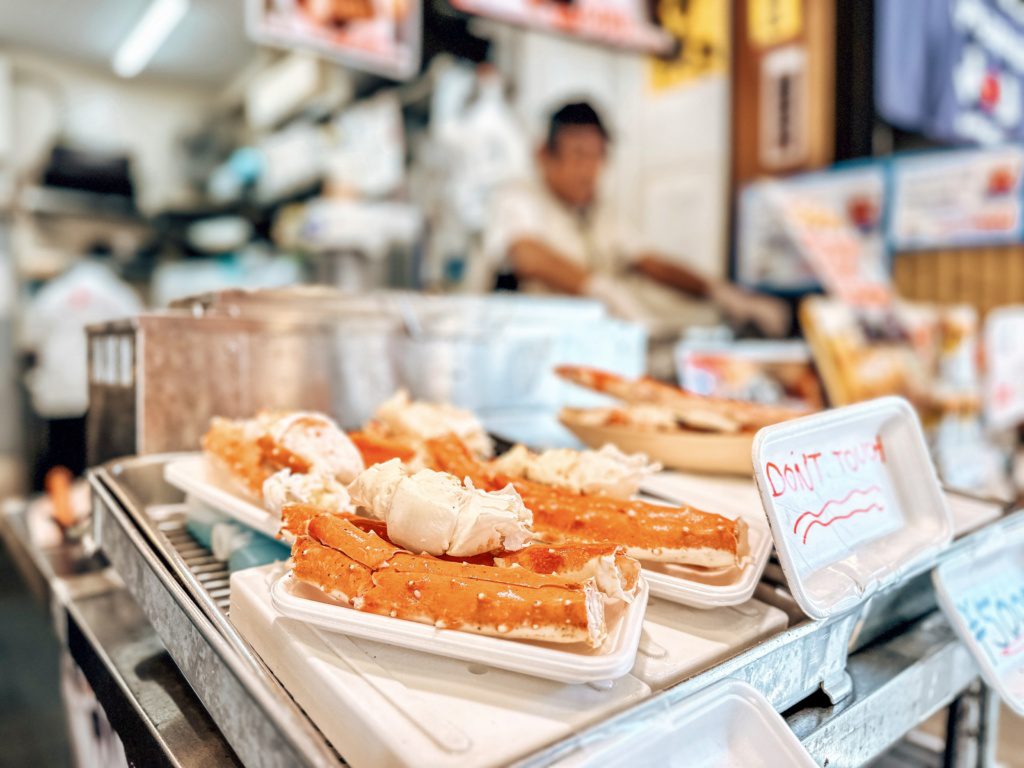
- Seafood Rice Bowls (Donburi): These bowls topped with fresh sashimi are a delicious way to enjoy the market’s offerings.
- Tsukudani: A local specialty made from seafood simmered in soy sauce, perfect for taking home.
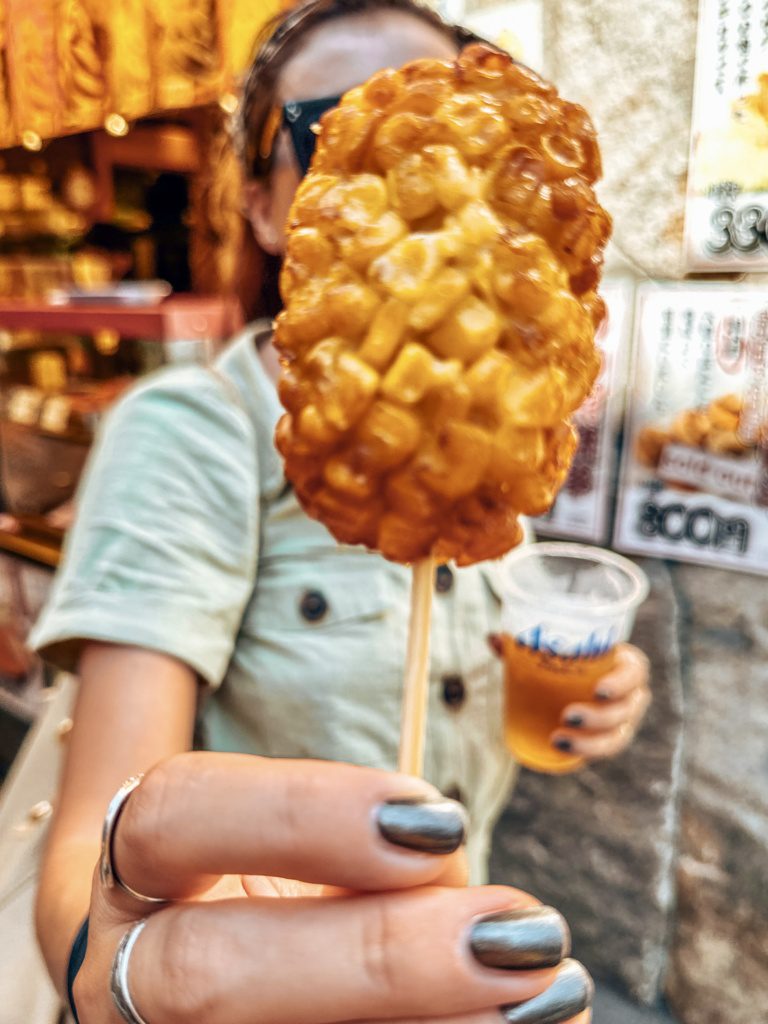
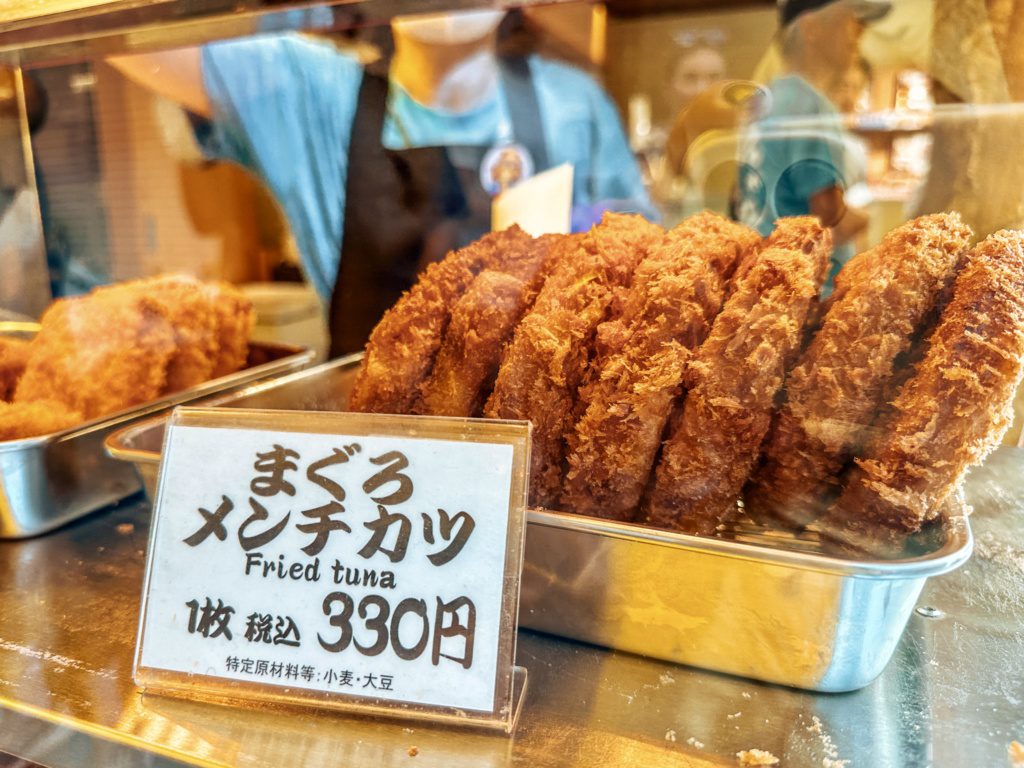
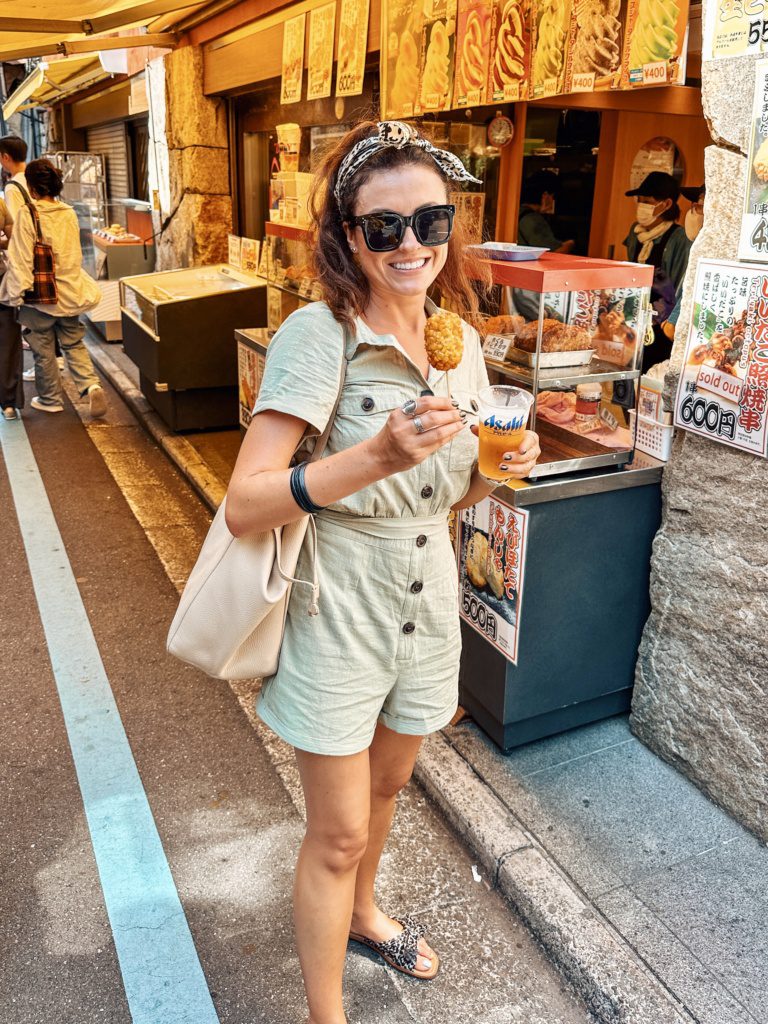
- Fish & sweetcorn cakes: A deep fried delight on a stick, best accompanied by a cold Asahi beer.
- Egg sandwiches: for the veggies out there, and those who can’t quite fathom the thought of eating sushi for breakfast. The famous Tokyo egg sandwich can be found at the Tsukiji fish market, too.
- Fresh Fruit: Japanese fruit is delicious and highly underrated. Get your hands on whatever is in season, and don’t miss the delicious oversized grapes.
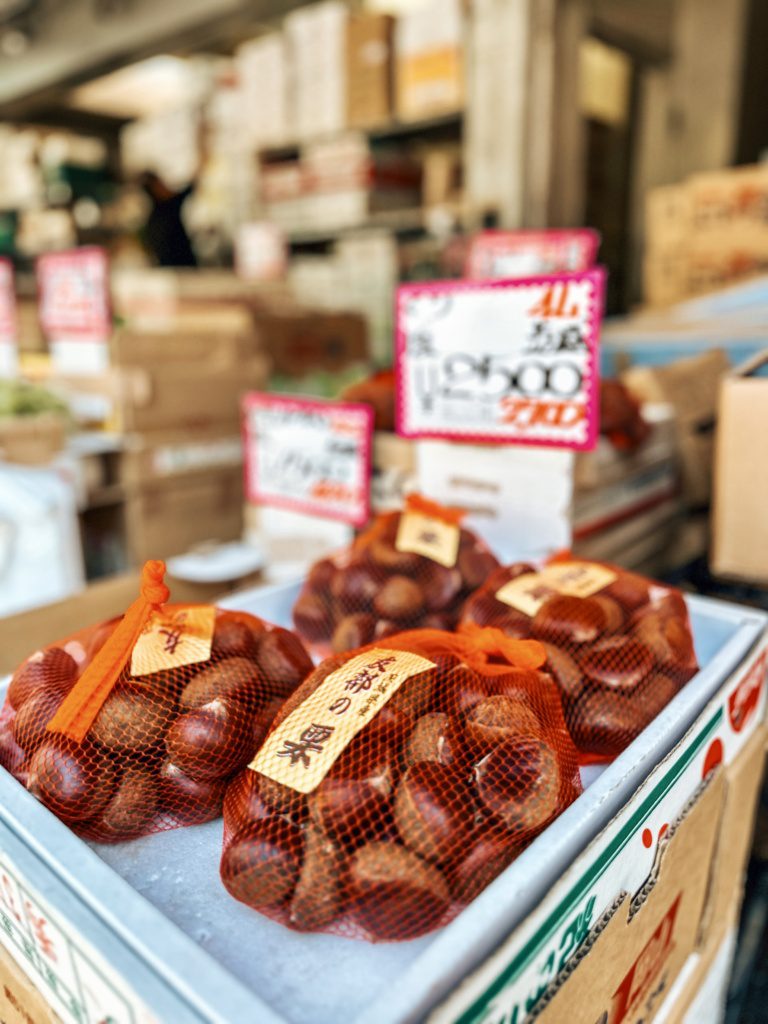
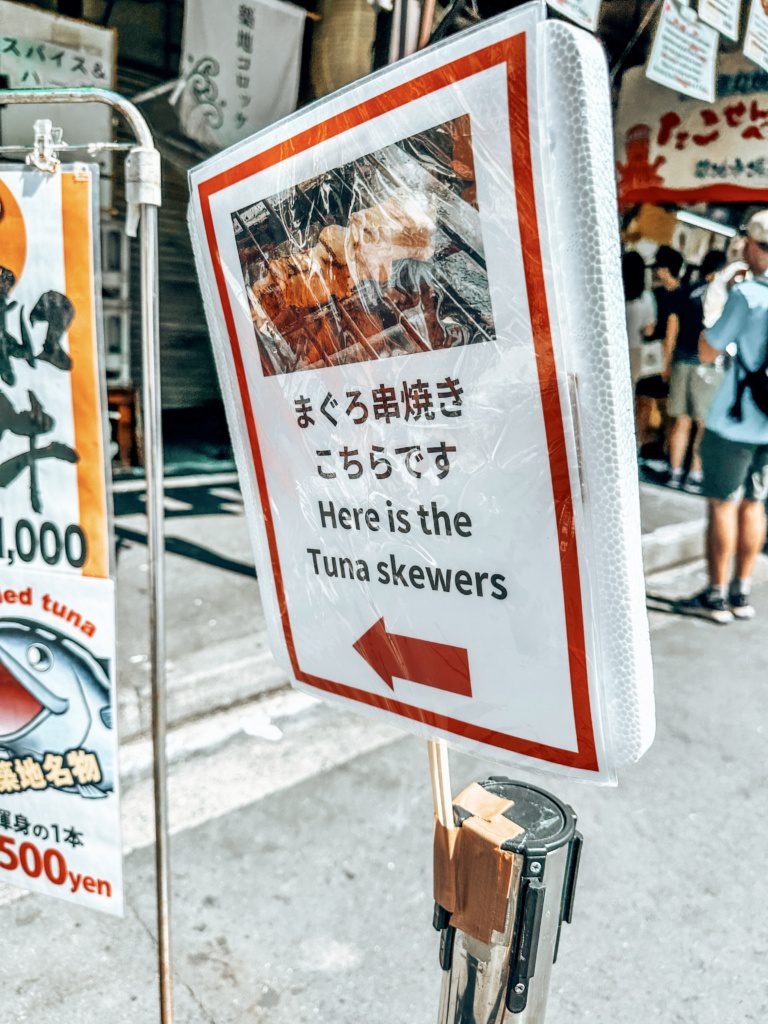
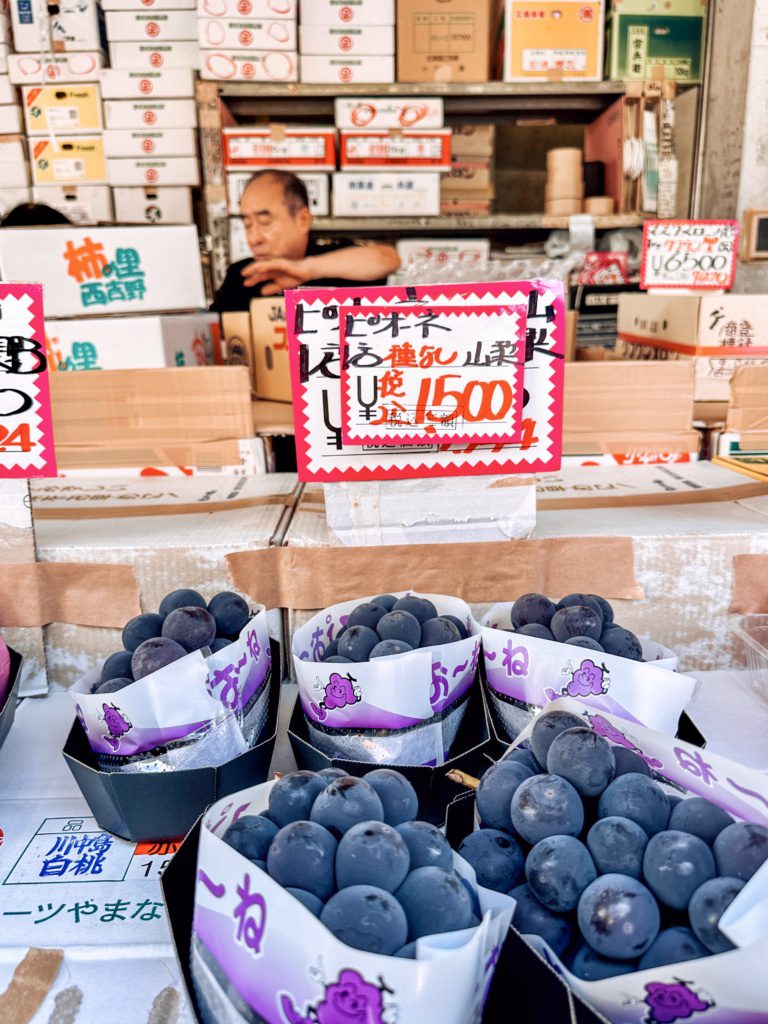
Best Food Souvenirs to Buy
No Tsukiji Fish Market guide would be complete without some food travel gift ideas. As you explore, consider picking up these unique foodie souvenirs:
- Tsukiji Pickles: These pickled vegetables are a delightful addition to any meal and make for a great gift.
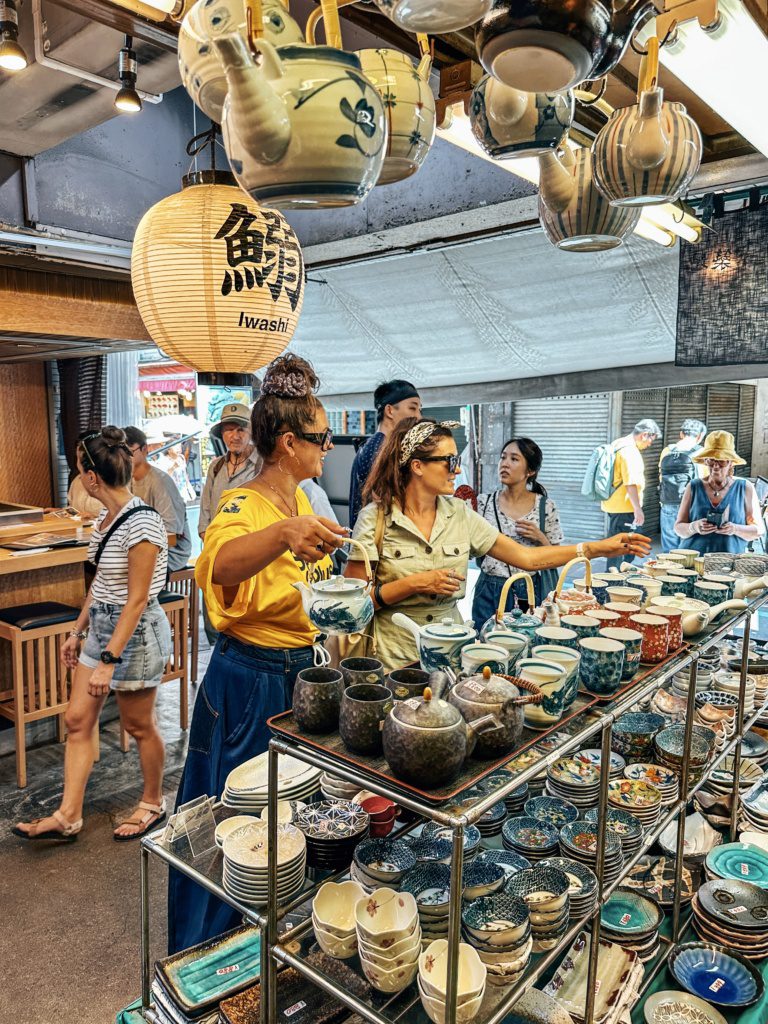
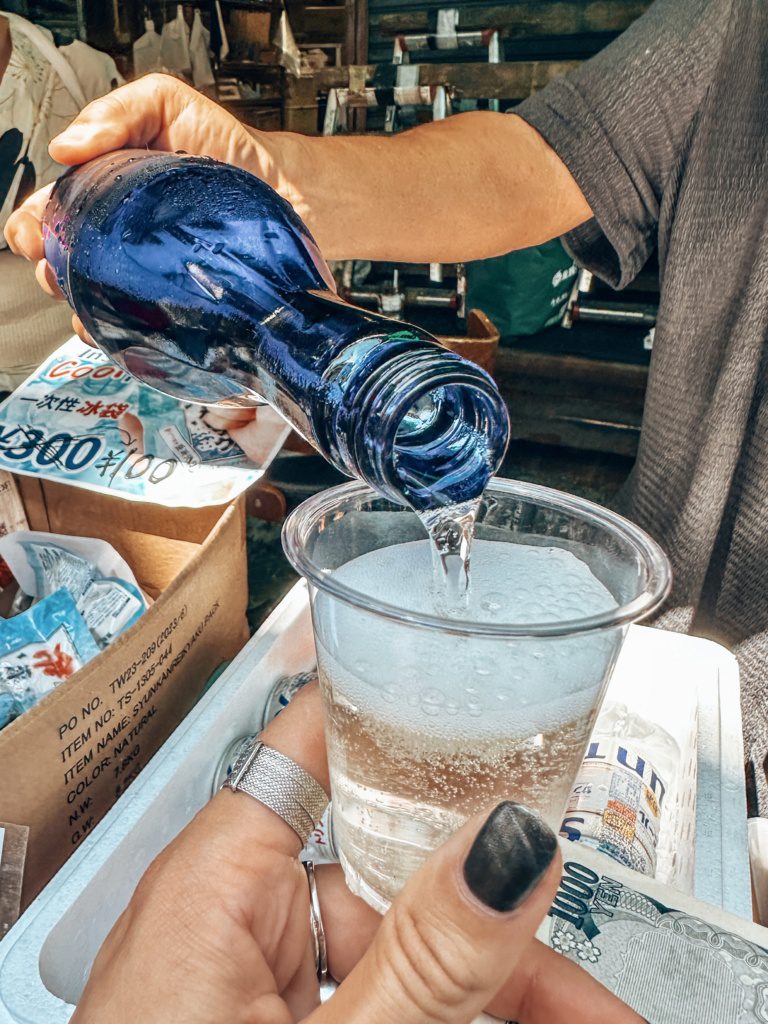
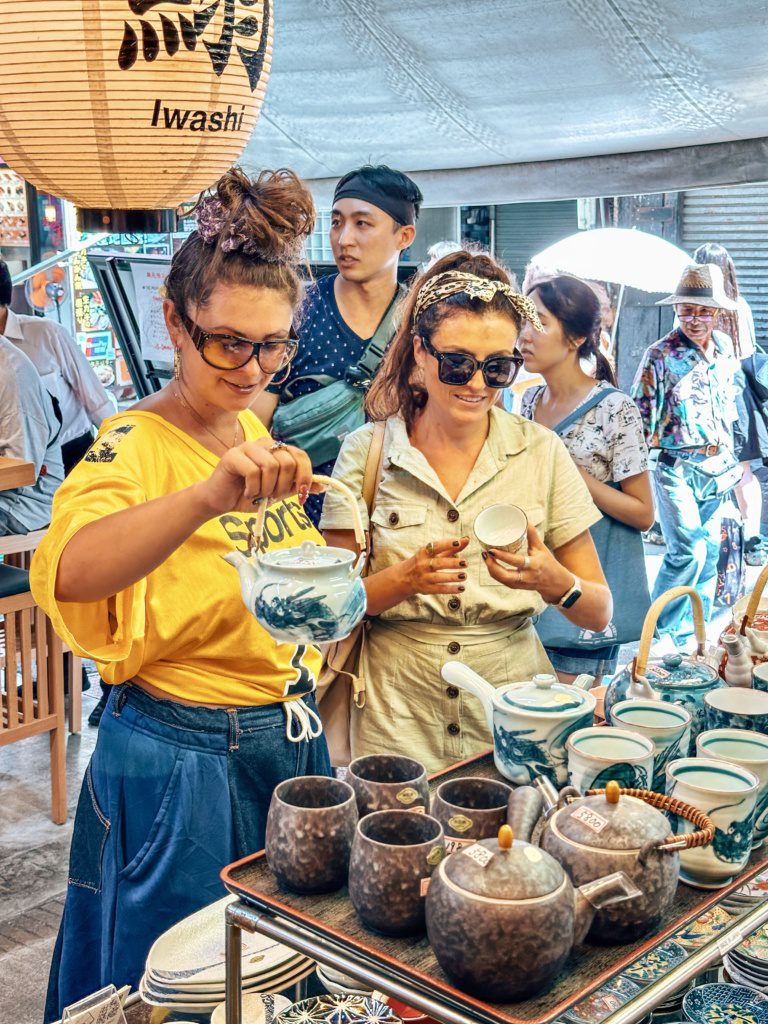
- China and Tea Sets: If you don’t have time to explore specialty shops or department stores, Tsukiji market is a very decent place to stock up on beautifully crafted china tea sets. Some of the vendors offer worldwide shipping.
- Dried Seafood Snacks: From squid to seaweed, these snacks are popular and easy to pack.
- Japanese Condiments: Look for soy sauce, wasabi, and other condiments that are locally produced.
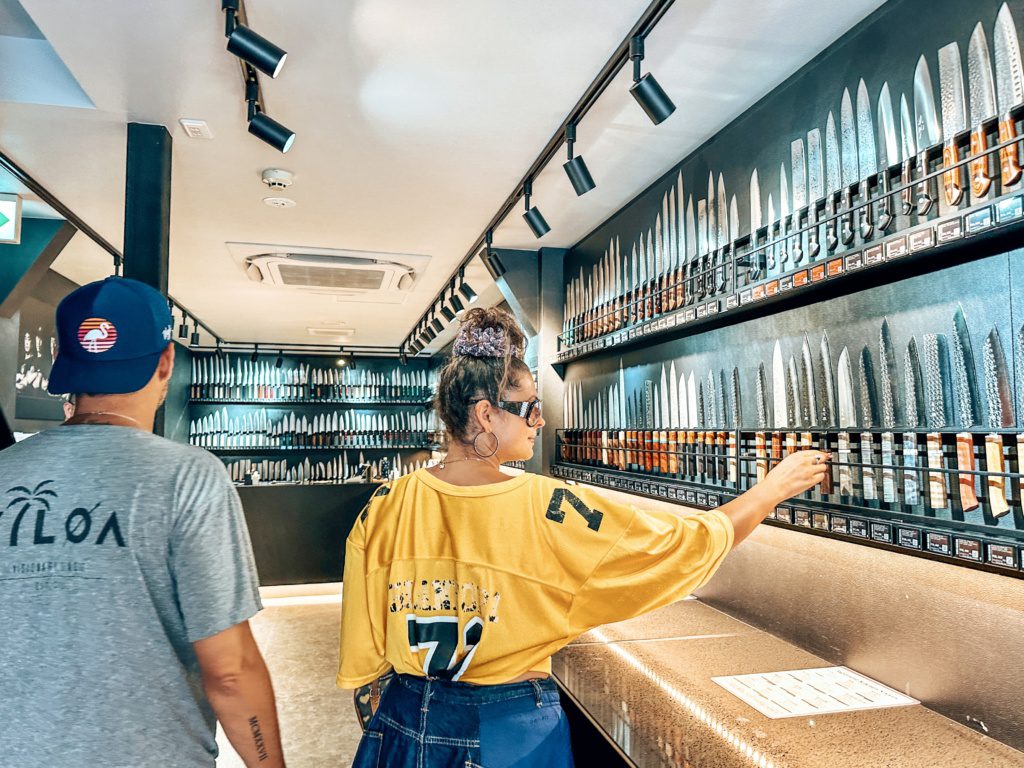
- Matcha: there are several well supplied matcha stalls. They sell not just leafy and powdered tea but also all the gadgets you will need to prepare it. Stock up on matcha cups, whisks etc. They also offer gift wrapping – a perfect gift for the foodies back home.
- Kitchen Knives: unleash your inner sushi chef back home with some of Japan’s most professional knives. Can you think of a better place or excuse to update your old knife set? has the best selection and they ship worldwide.
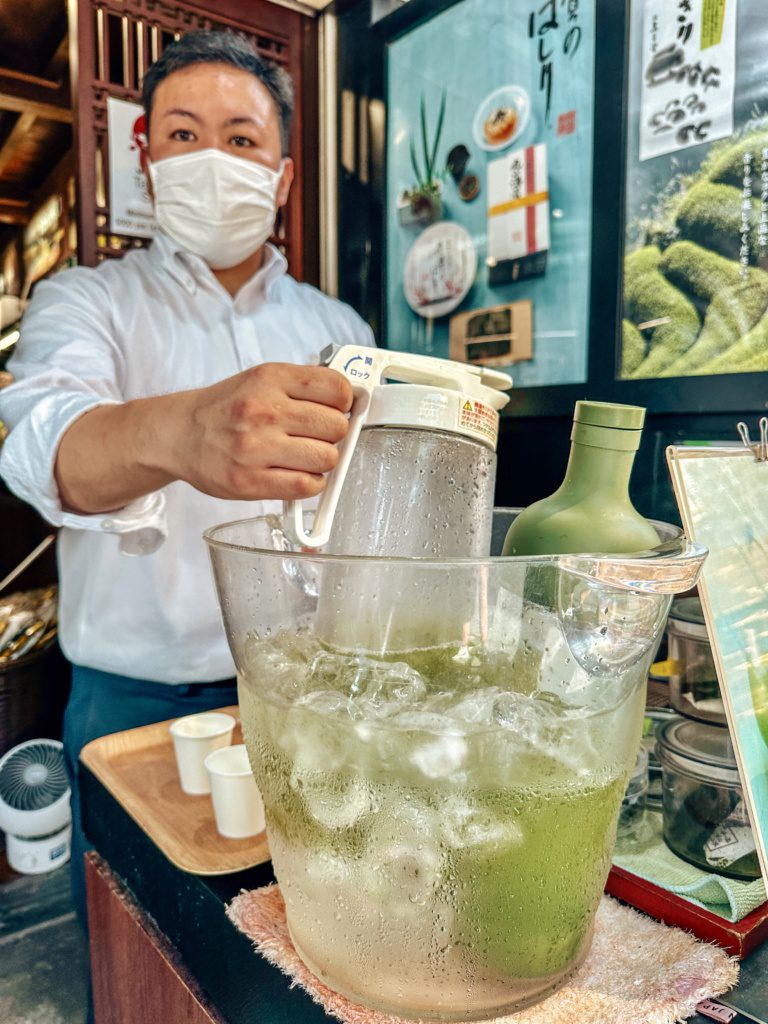
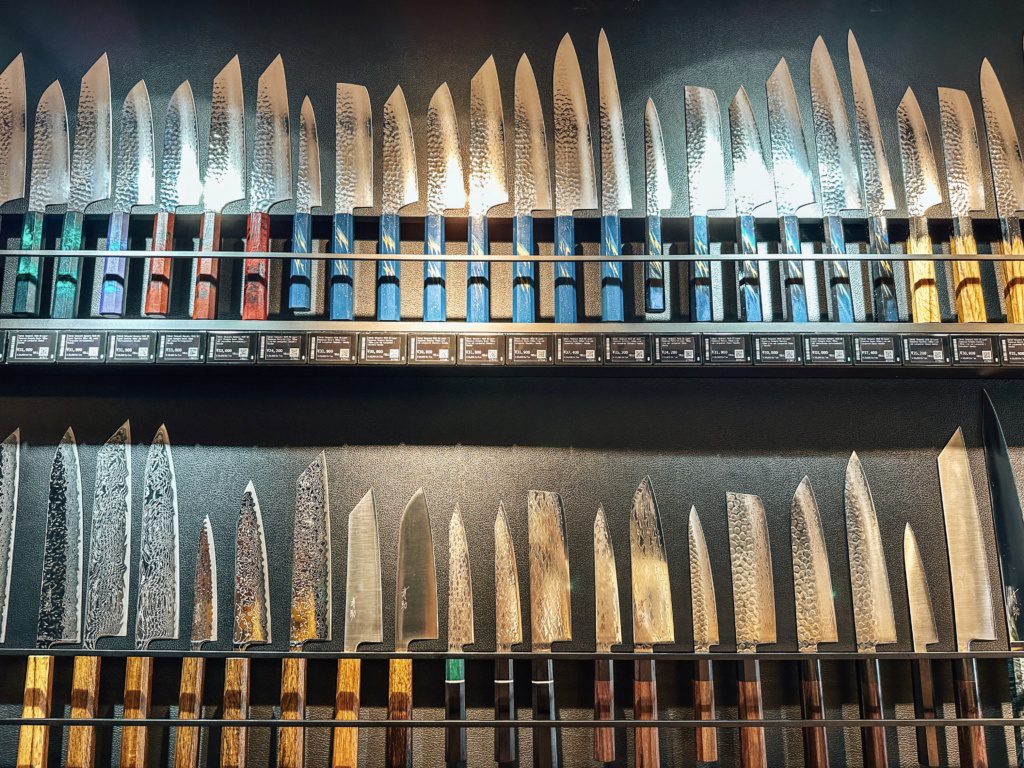
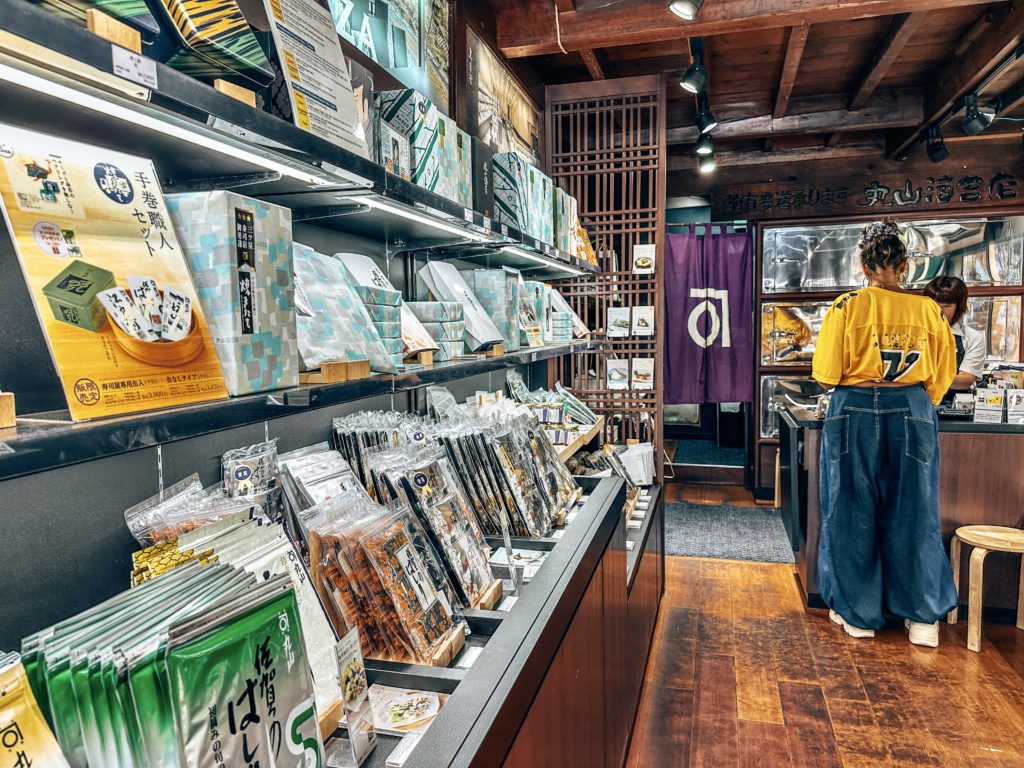
Best Restaurants Inside the Tsukiji Fish Market
If you’re a food traveler in Tokyo, the Tsukiji Fish Market is a treasure trove of culinary delights. While the inner wholesale market has moved to Toyosu, the outer market remains vibrant and packed with incredible dining options.
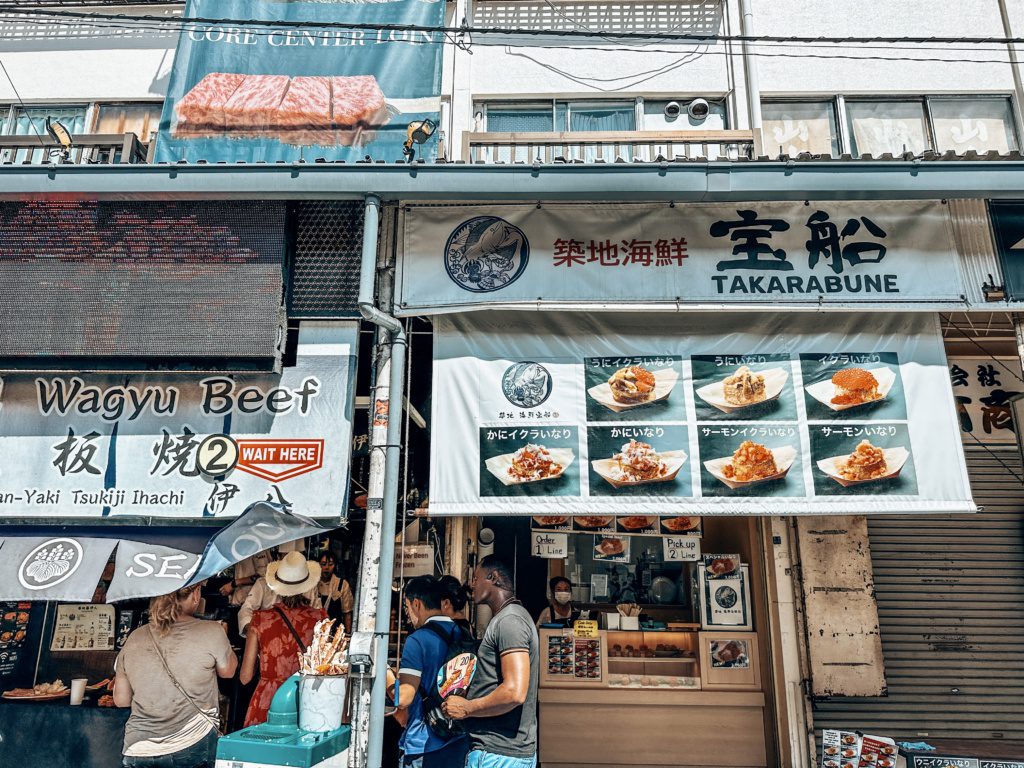
Whether you’re craving fresh sushi, savory donburi, or delectable grilled seafood, Tsukiji has something for everyone. Here’s a guide to the best restaurants you shouldn’t miss during your visit.
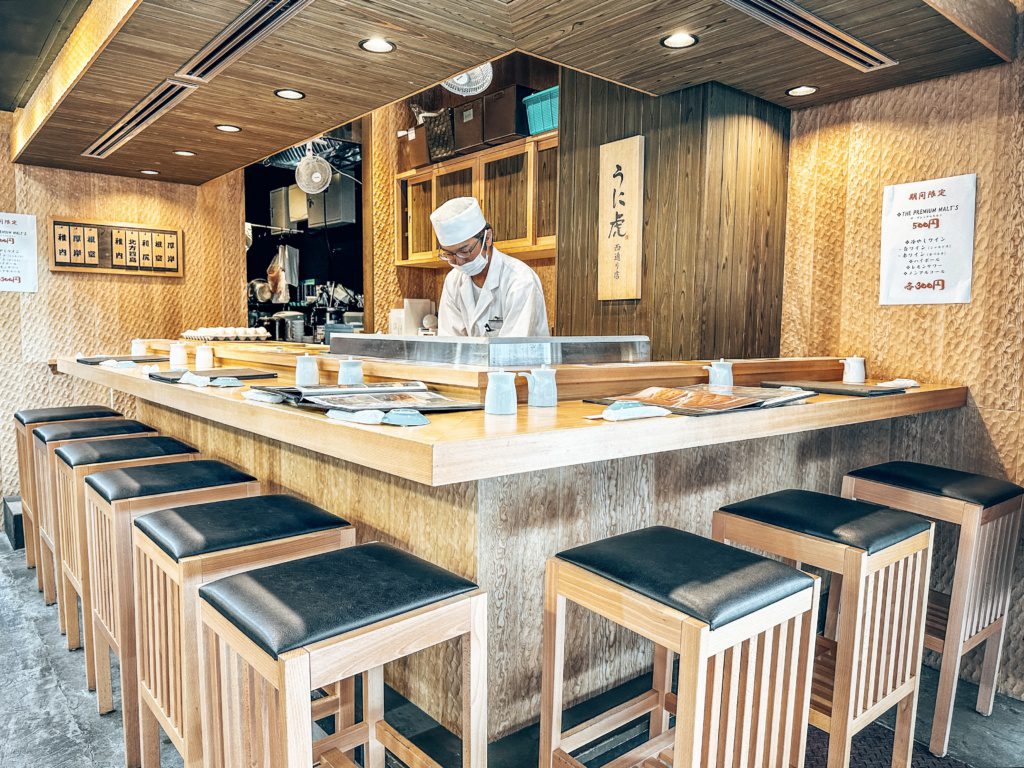
1. Sushi Dai
Why Visit: Sushi Dai is an institution within Tsukiji and a must-visit for sushi lovers. Renowned for its melt-in-your-mouth sushi, this small restaurant often has long lines, but the wait is absolutely worth it. Also look for an outpost at the new fish market location in Toyosu.
What to Order: The Omakase (chef’s choice) set will give you a taste of the freshest catches of the day, including buttery tuna, sweet shrimp, and rich sea urchin. Pro tip: If the line is too long check out Sushisay – equally good!


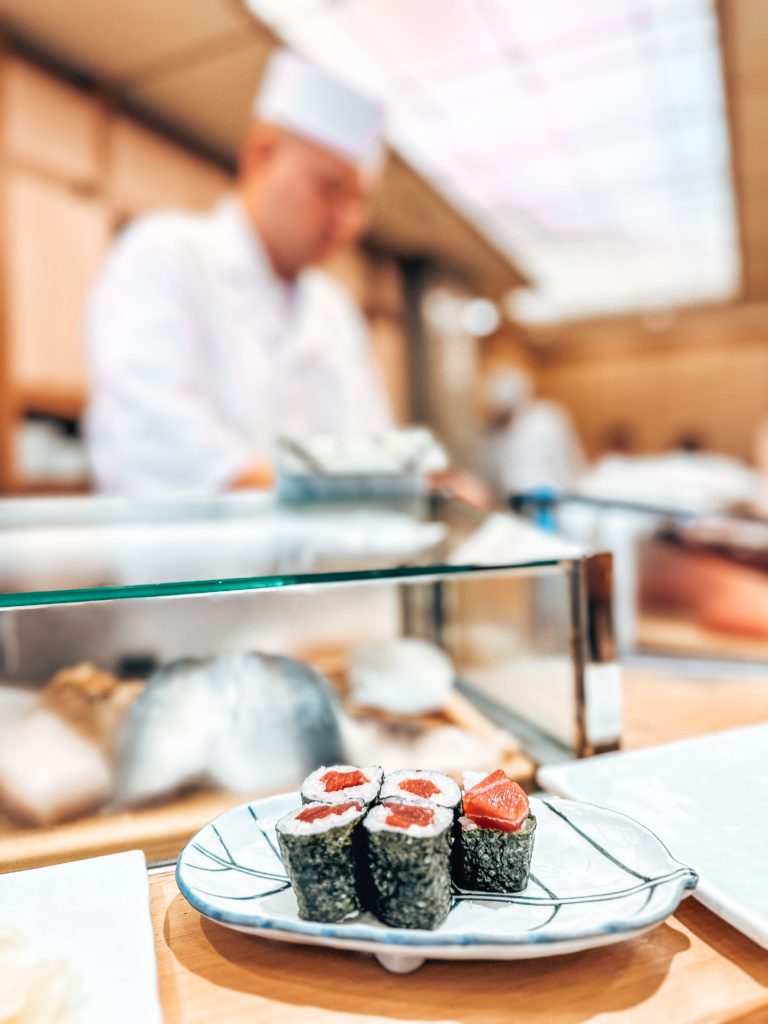
2. Sushi Zanmai
Why Visit: Zanmai Sushi is another heavyweight in the sushi game. It’s equally famous and known for its high-quality fish and skilled chefs. Open 24 hours, Sushi Zanmai is a favorite for both early risers and night owls.
What to Order: Try the nigiri or sashimi platters for a variety of flavors. This lively spot is known for its generous portions and quality sushi. Pro tip: be sure to sit at the bar to watch the sushi chefs in action.
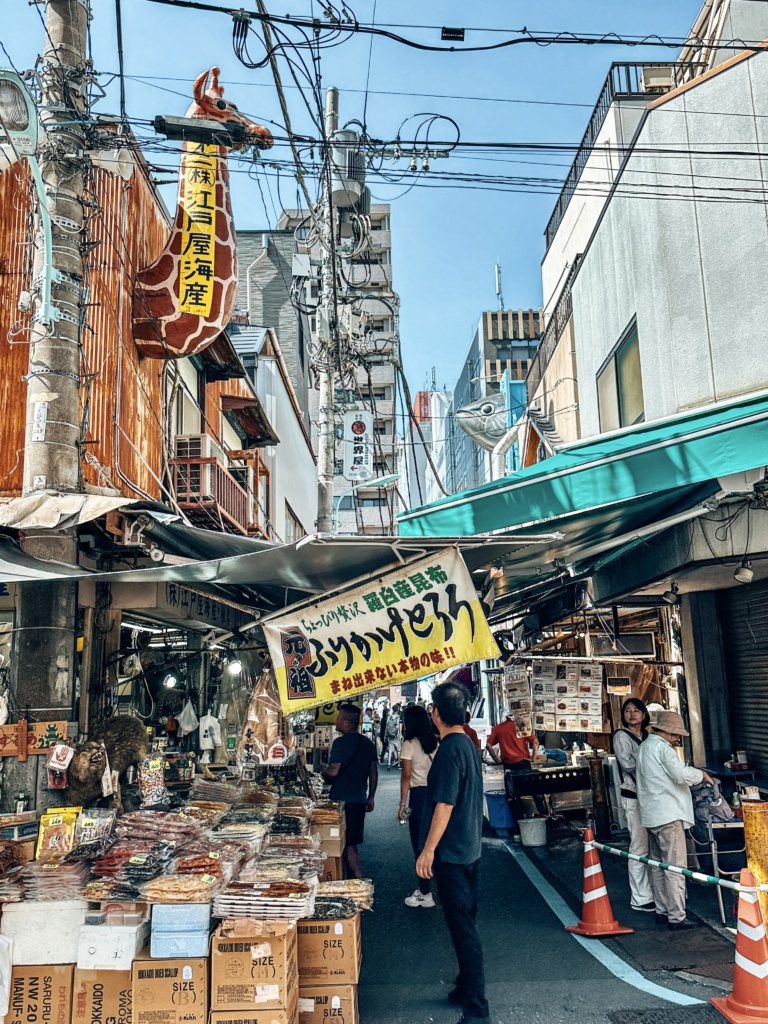
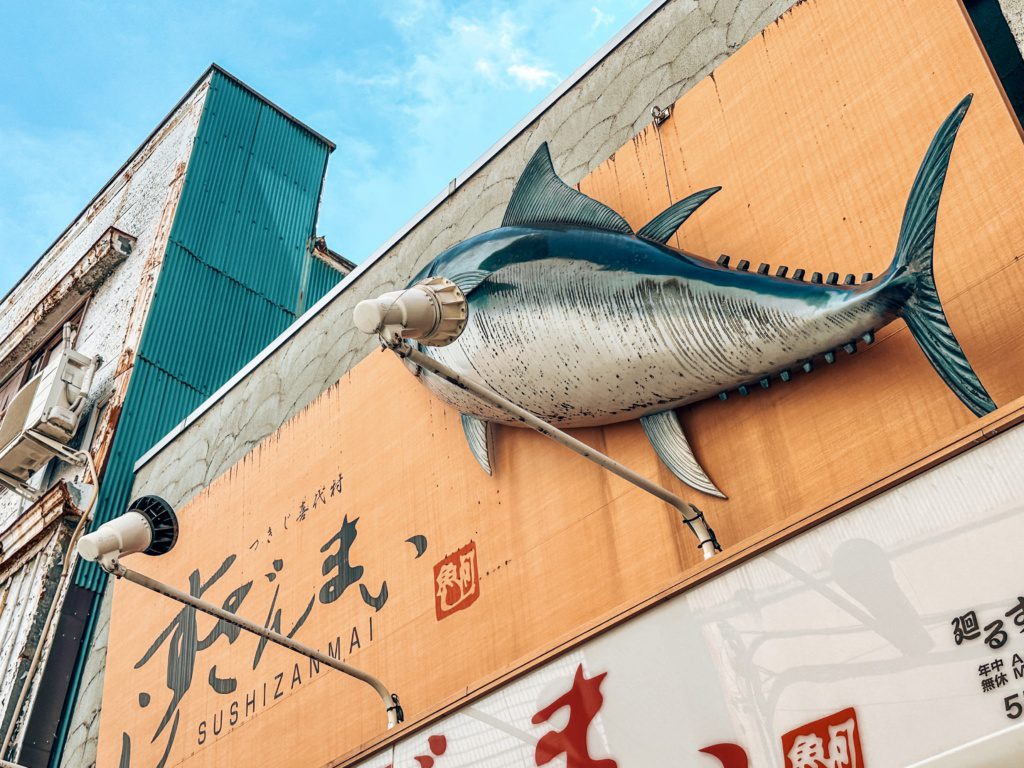
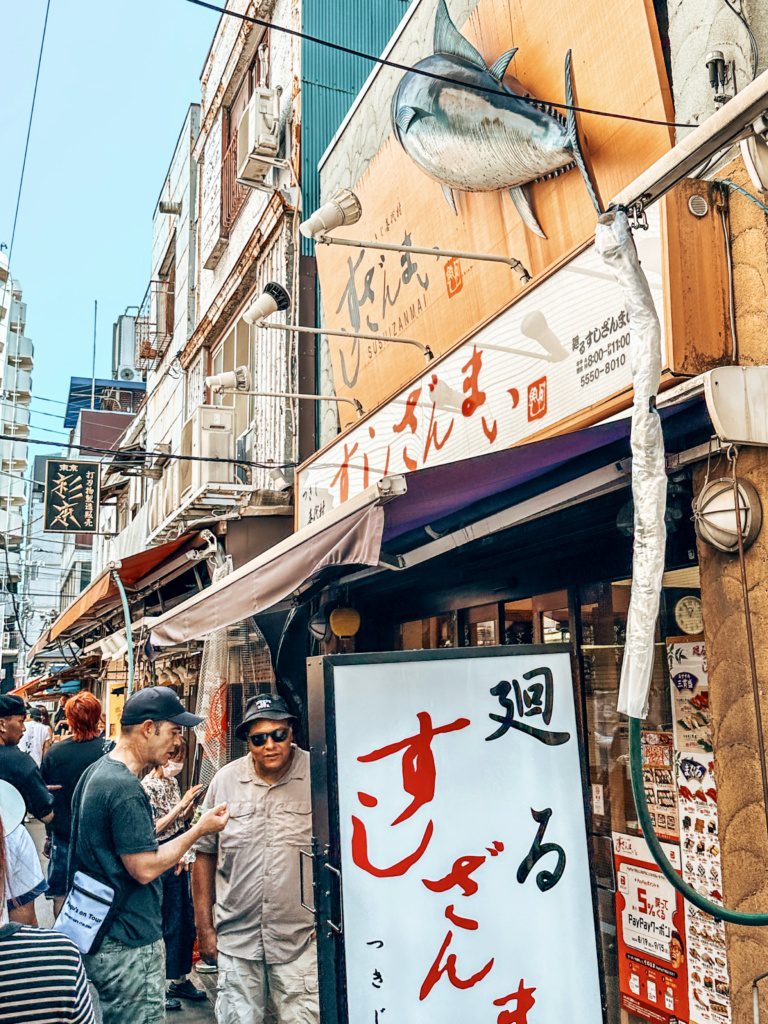
3. Tsukiji Yaki Uo Ishikawa
Why Visit: This casual eatery offers a range of seafood dishes and is known for its friendly atmosphere and fresh ingredients. Seafood plates & rice bowls are dished up in a bustling location with tabletop grills.
What to Order: Don’t miss the grilled fish and their seafood rice bowls, which are packed with fresh sashimi and topped with flavorful sauces. Yakiniku and fatty tuna are standouts, too.
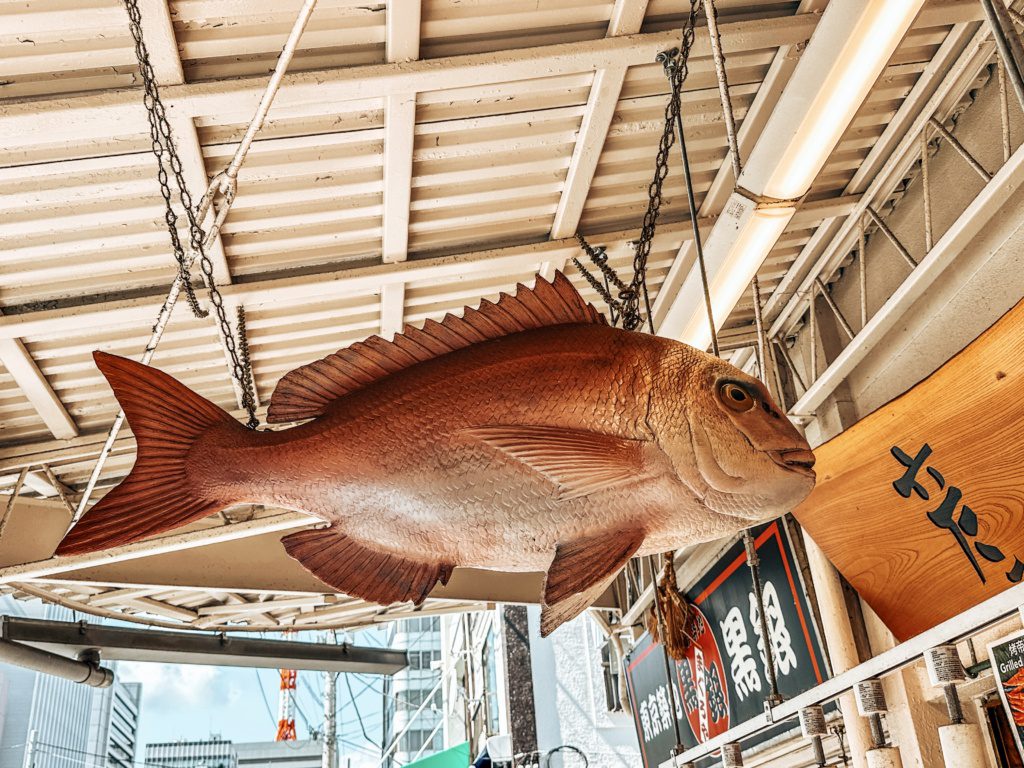
4. Tsukijiro
Why Visit: Specializing in traditional donburi fish-topped rice bowls, Tsukijiro provides a more serene dining experience amid the bustling market.
What to Order: Their kaisendon (seafood bowl) is a standout, featuring a beautiful assortment of sashimi over rice. Pair it with a warm bowl of miso soup for a complete meal.
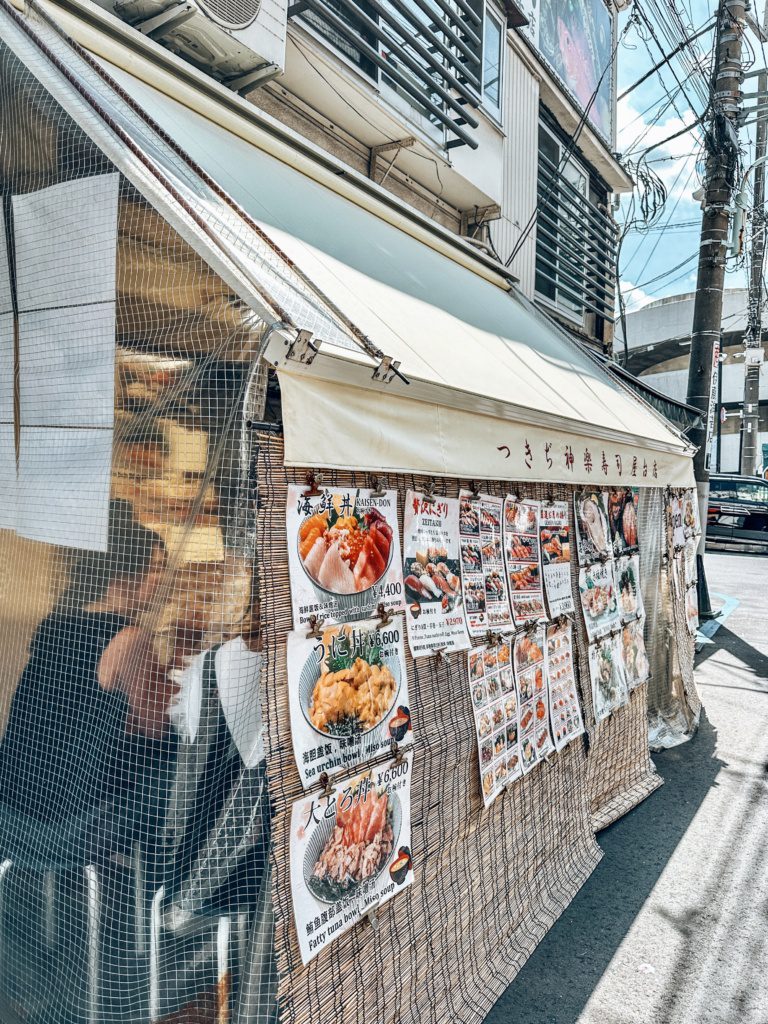
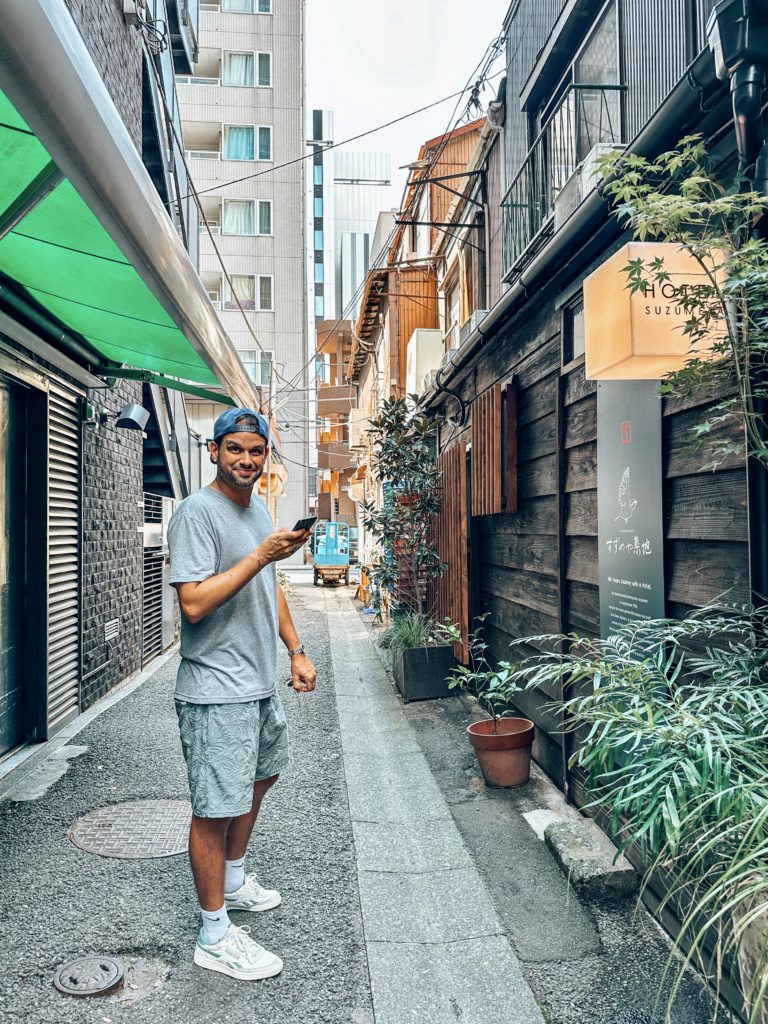
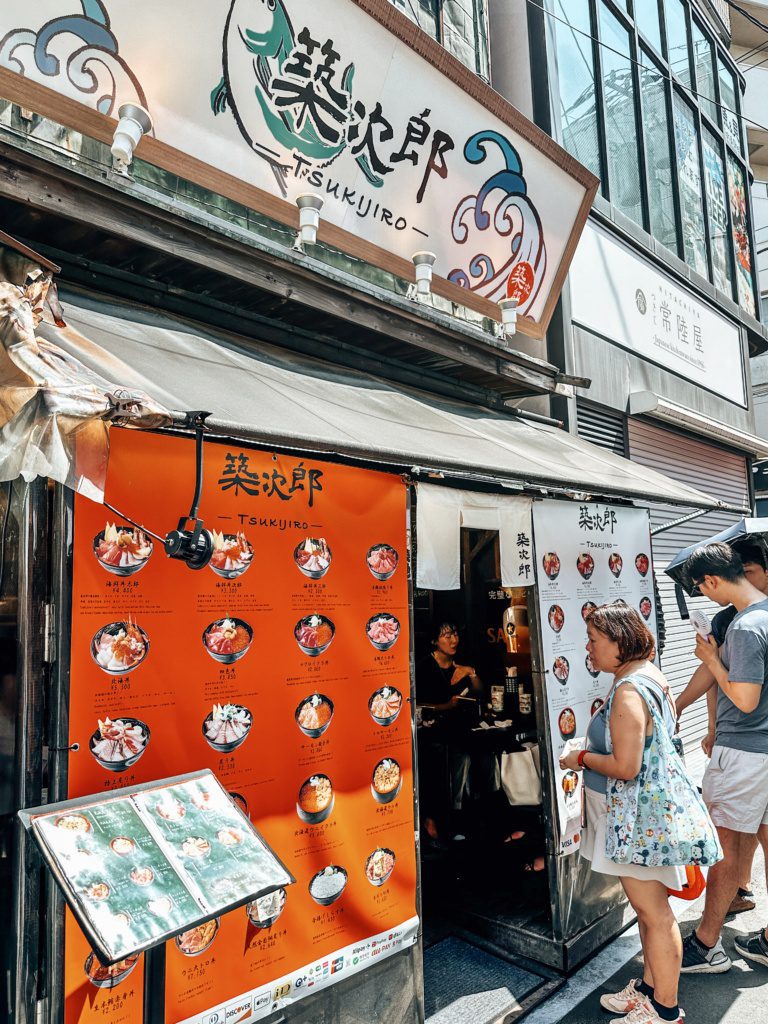
5. Tamagoyaki (Egg Omelette) Stalls
Why Visit: While not a sit-down restaurant, the tamagoyaki stalls at Tsukiji are a delightful snack option. The sweet and savory Japanese omelette is cooked to perfection right in front of you.
What to Order: Grab a slice of tamagoyaki on a stick for a tasty, portable treat as you explore the market. Alternatively look for egg sandwiches (see above), and even egg burgers.
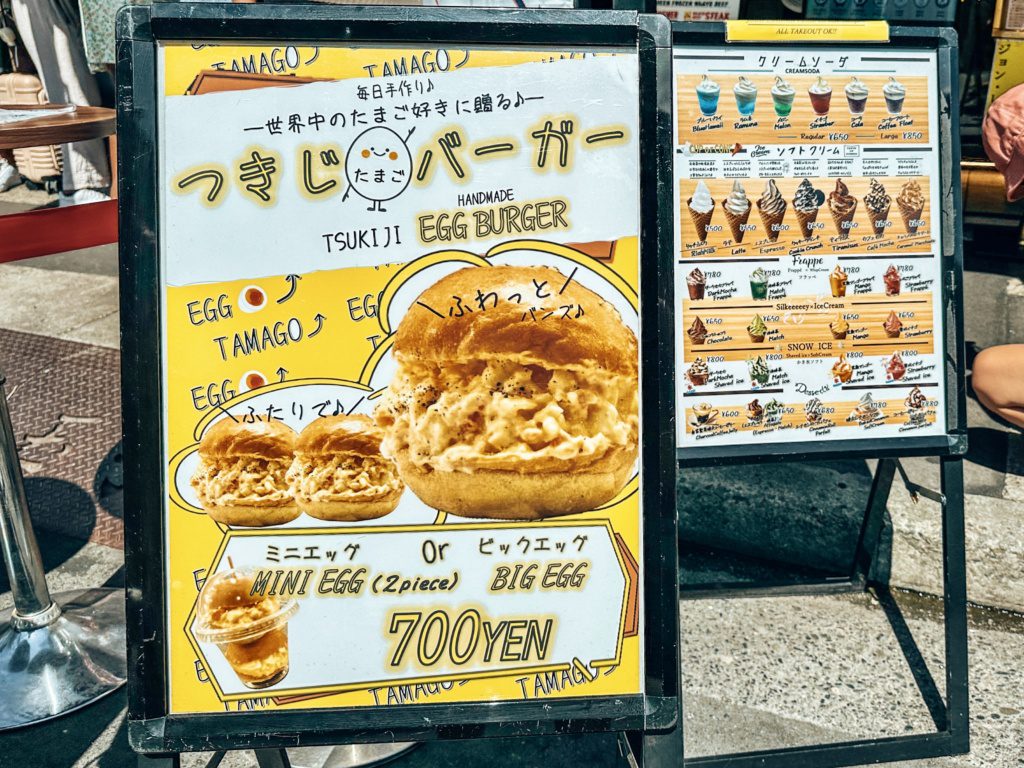
Tips for Your Visit
- Timing is Key: To avoid long lines, try to arrive early in the morning.
- Cash is King: Many stalls and small restaurants prefer cash, so be sure to have some yen on hand.
- Eat and Explore: Don’t hesitate to try a variety of dishes from different vendors; the market is all about sampling and savoring.
- No Trash Cans: as is the case elsewhere in Tokyo, there are no trash cans at the Tsukiji market. Bring a spare plastic bag and pack it all away.
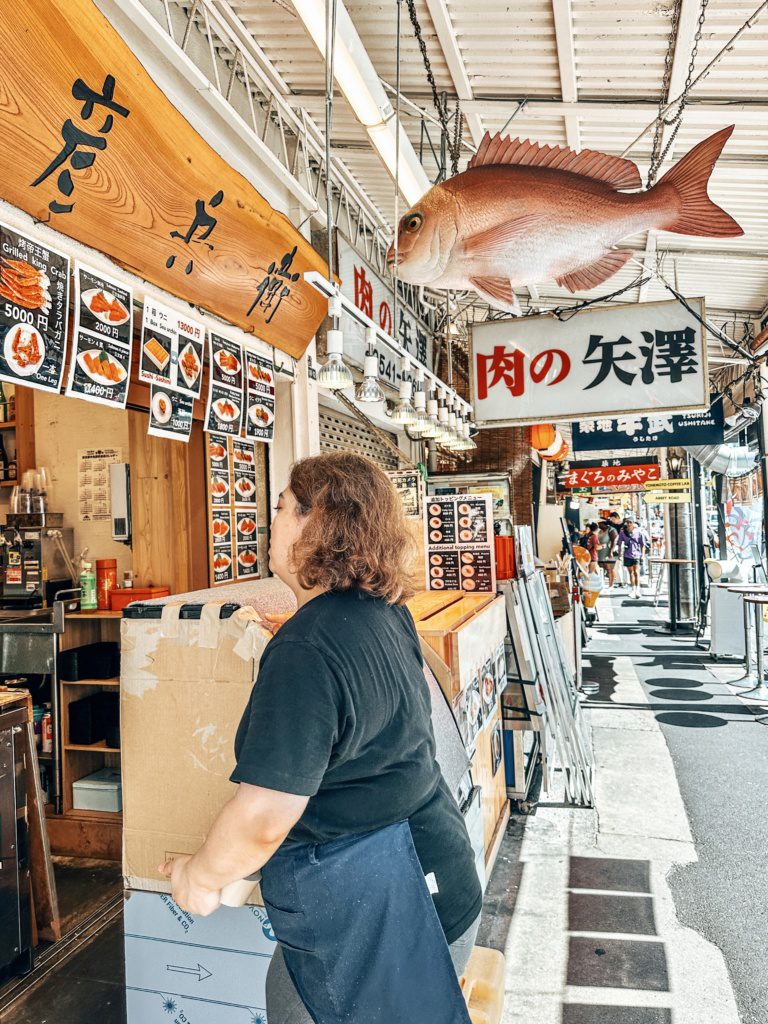
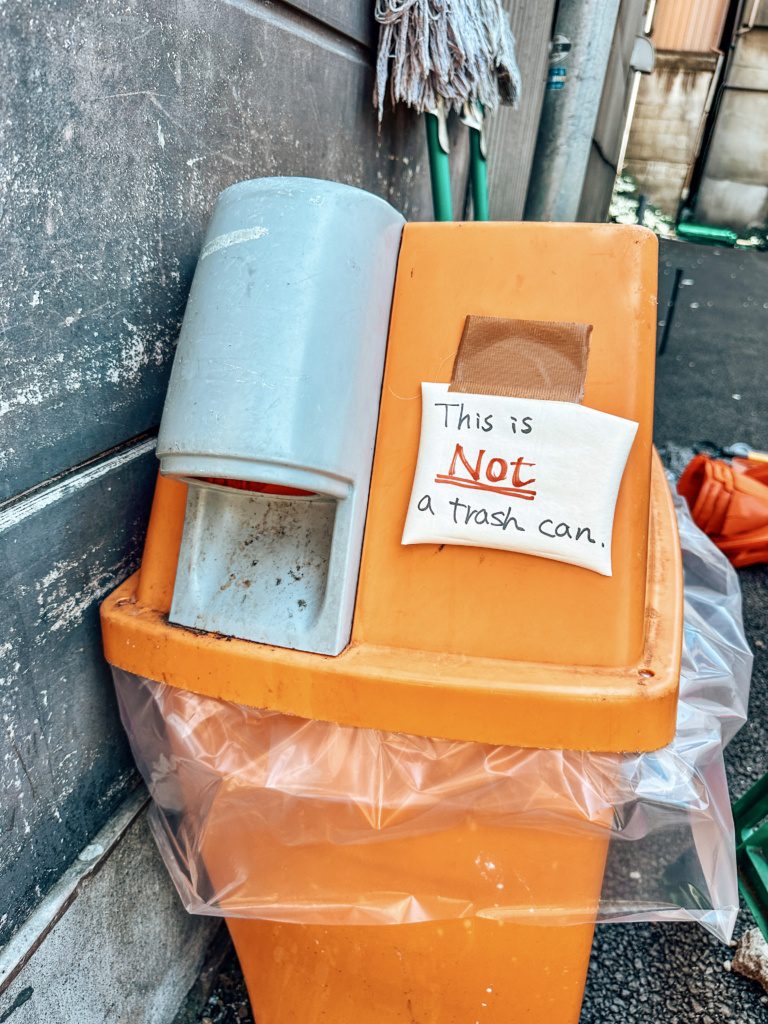
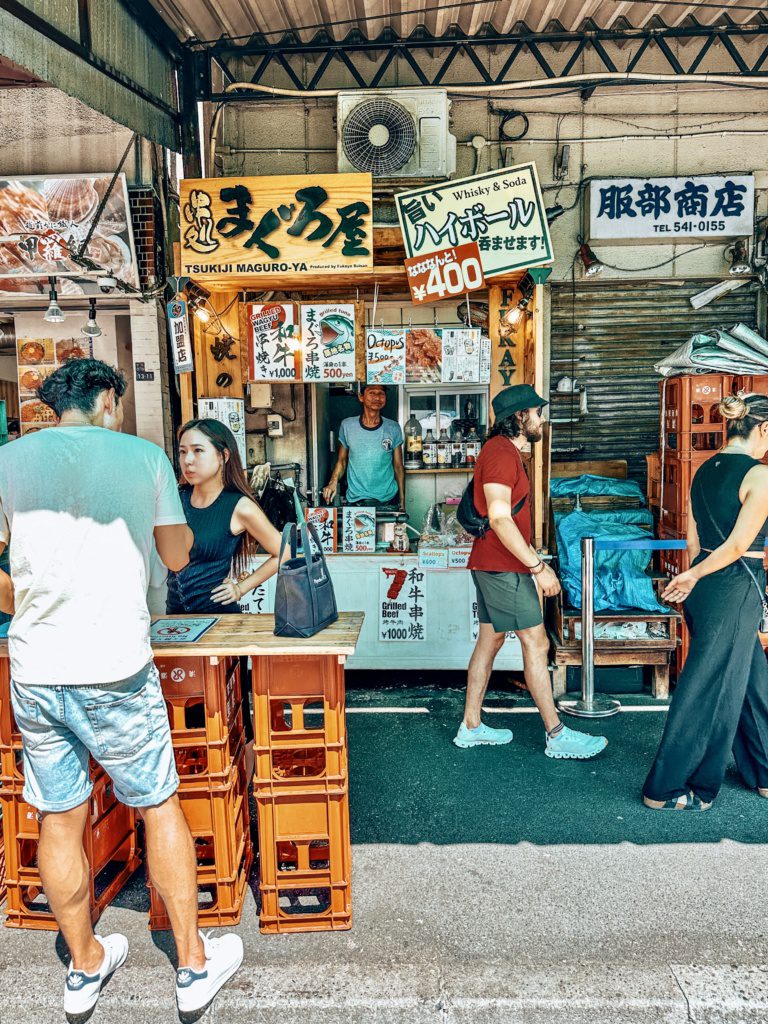
Tsukiji Fish Market Guide
Visiting Tsukiji Fish Market is a feast for the senses and a must for any food traveler in Tokyo. With its rich history, bustling atmosphere, and exceptional food offerings, it captures the essence of Japanese culinary culture.
Explore with local experts! BOOK Tokyo Tsukiji Fish Market Food and Culture Walking Tour or Tsukiji Fish Market Visit and Sushi Making Experience
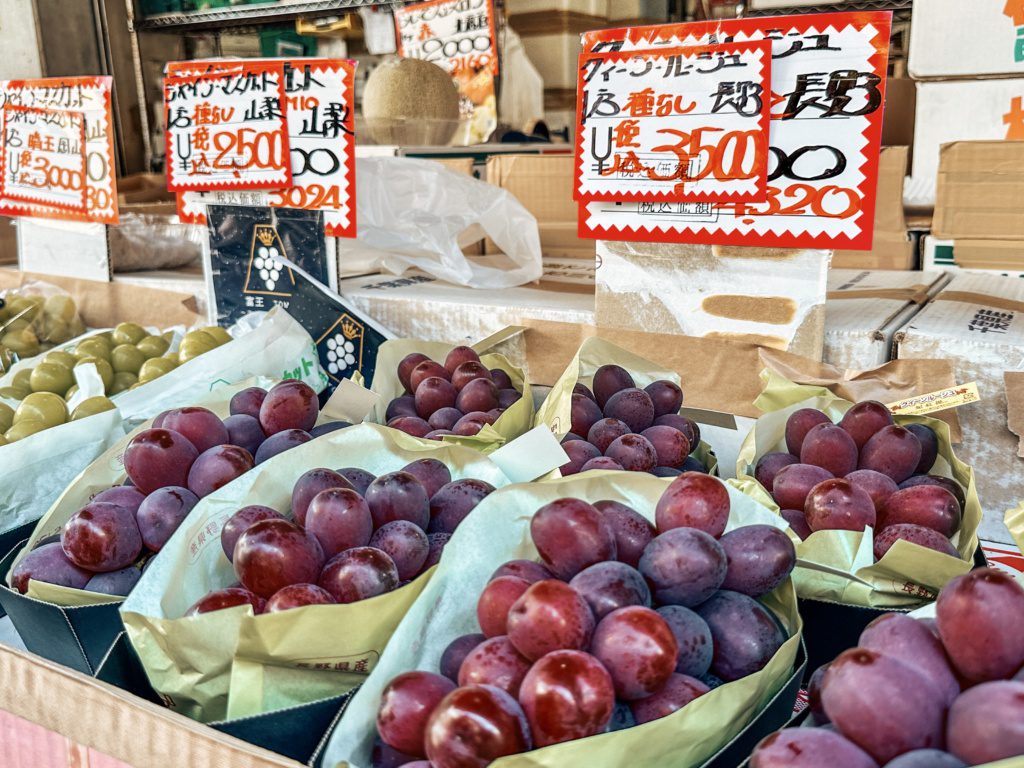
Whether you’re indulging in fresh sushi or exploring the vibrant stalls, Tsukiji promises a memorable experience that will leave you craving more. So, pack your appetite and get ready to embark on a delicious seafood adventure in the heart of Tokyo.
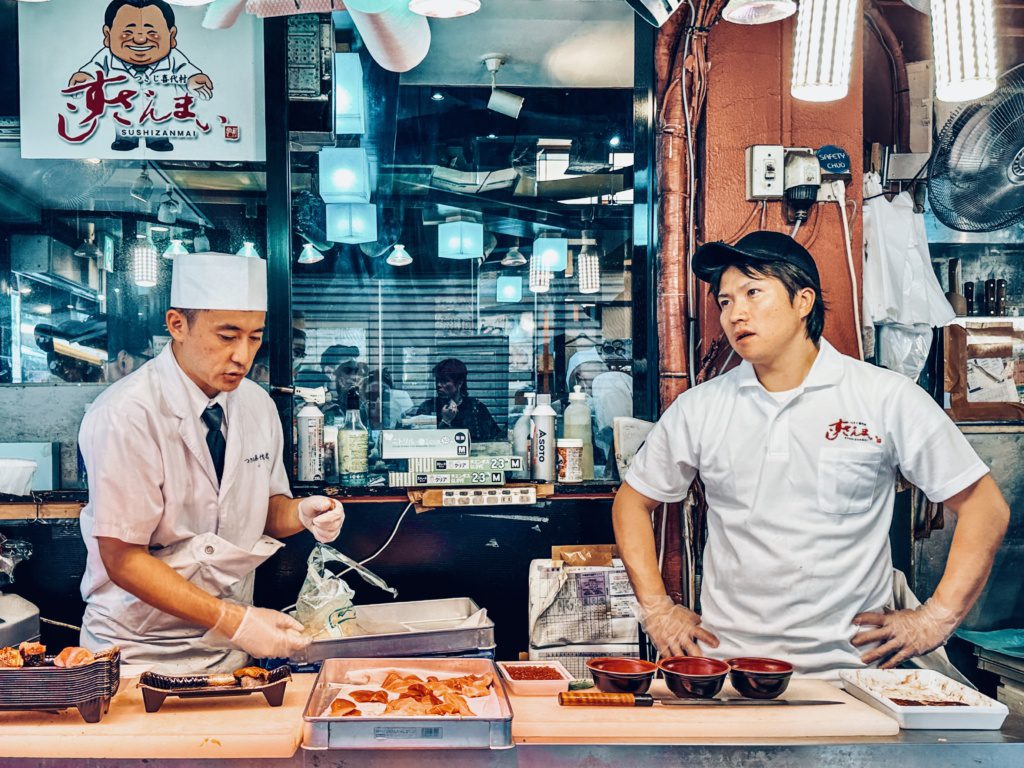
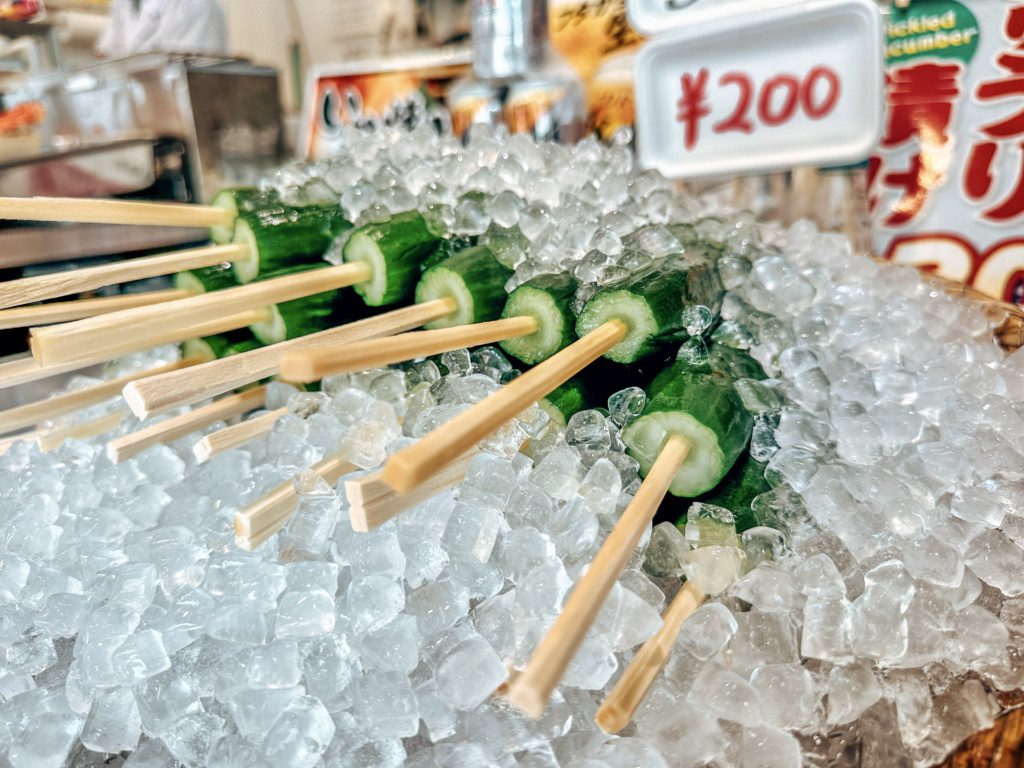
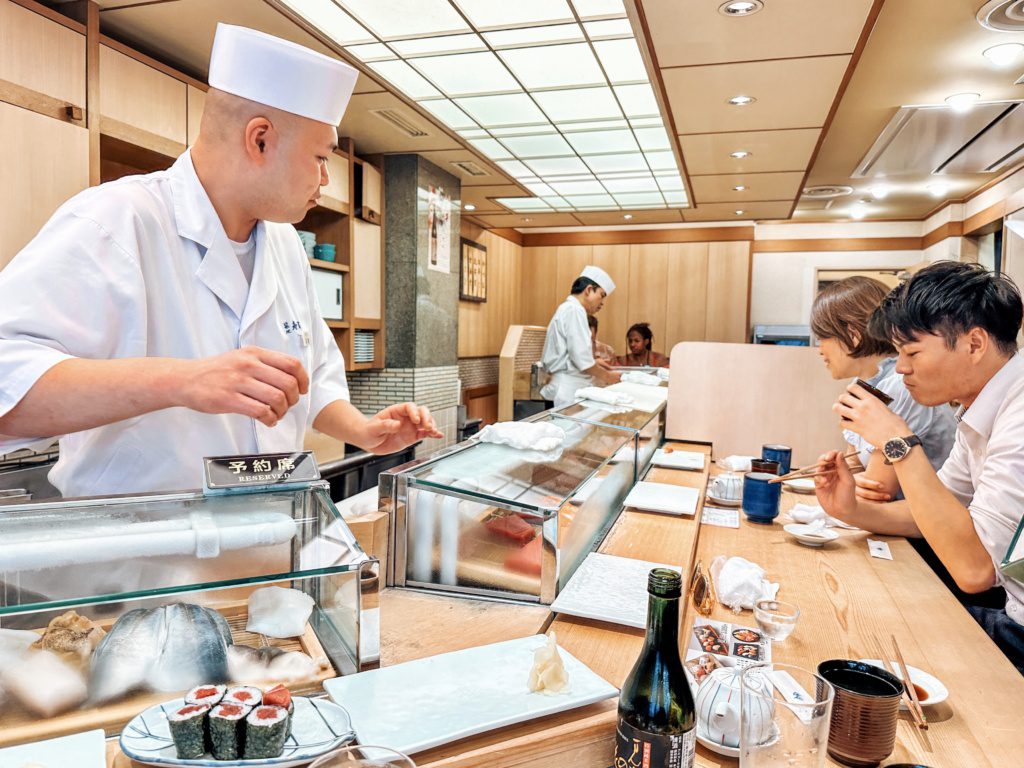
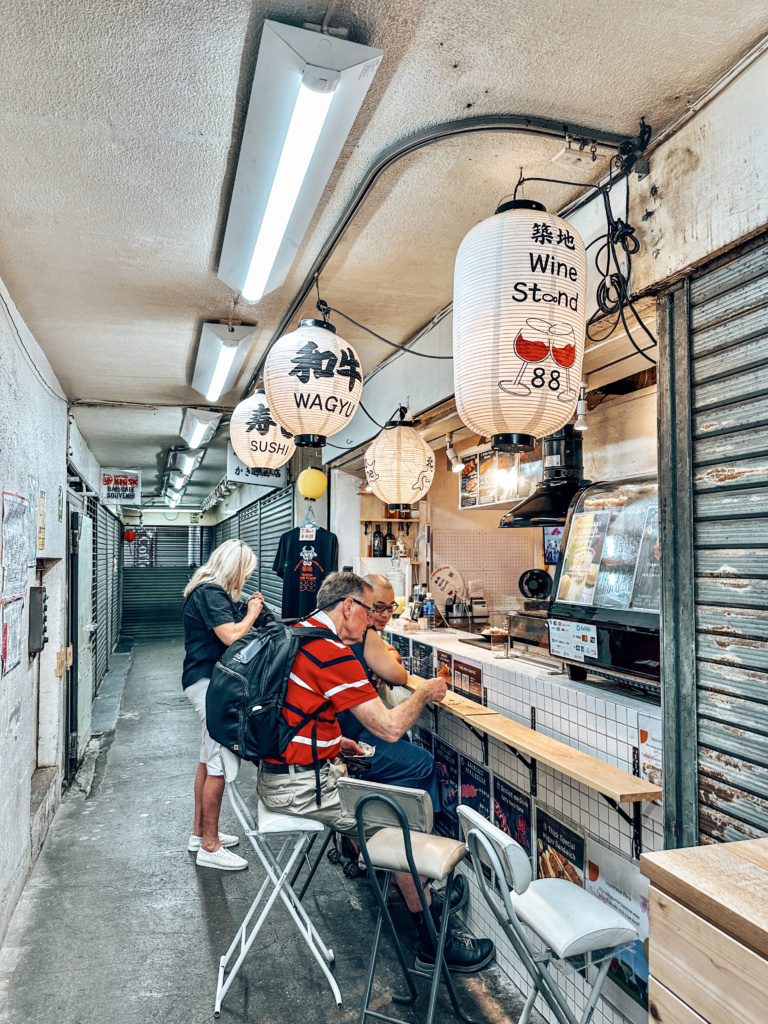
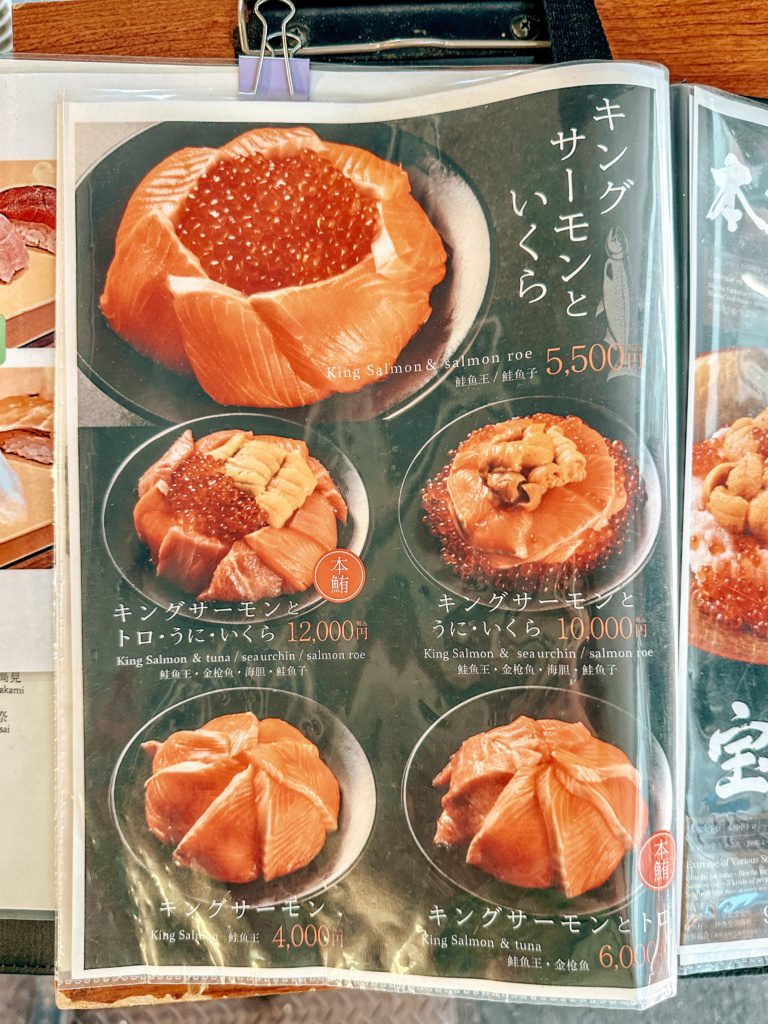
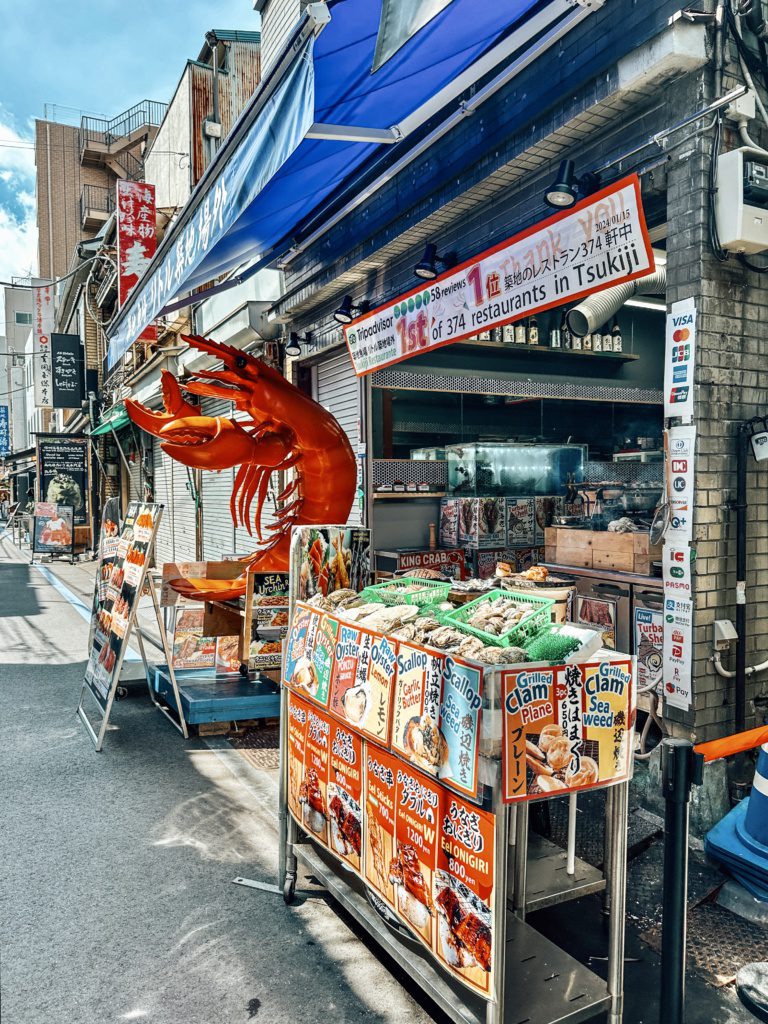
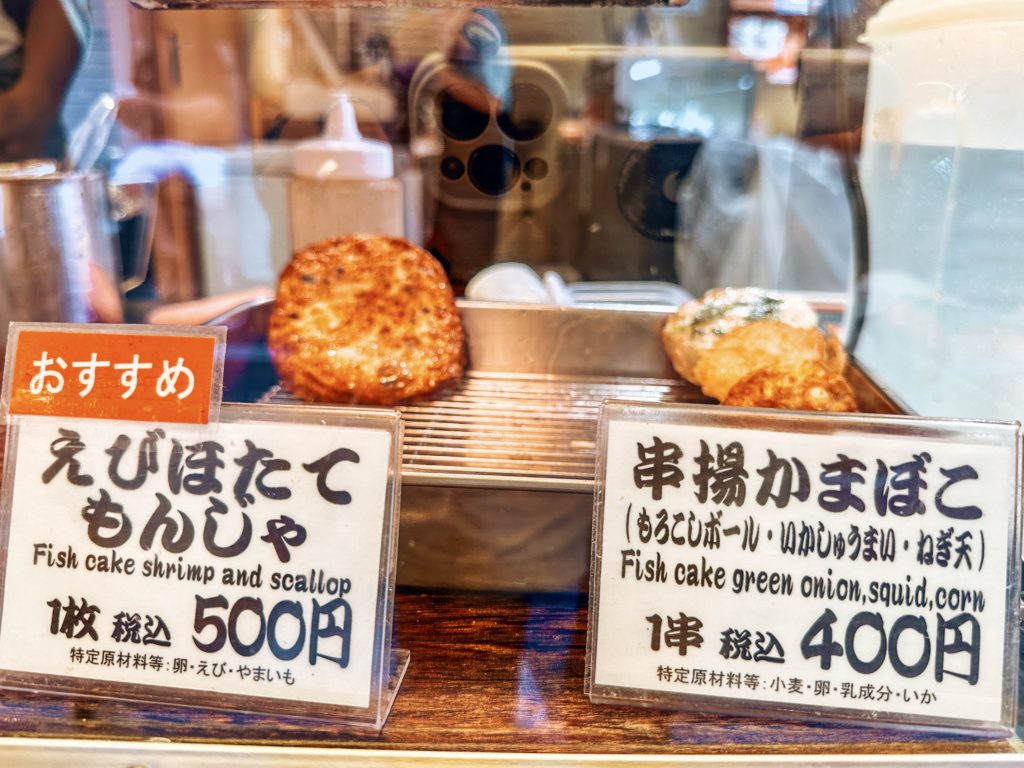
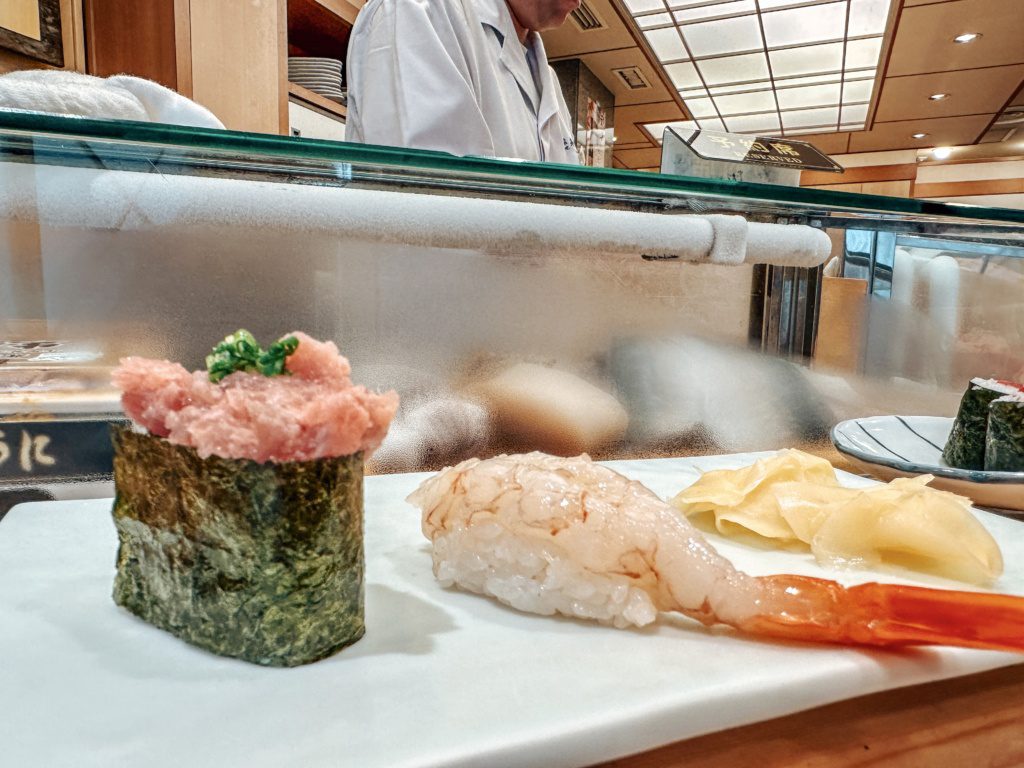
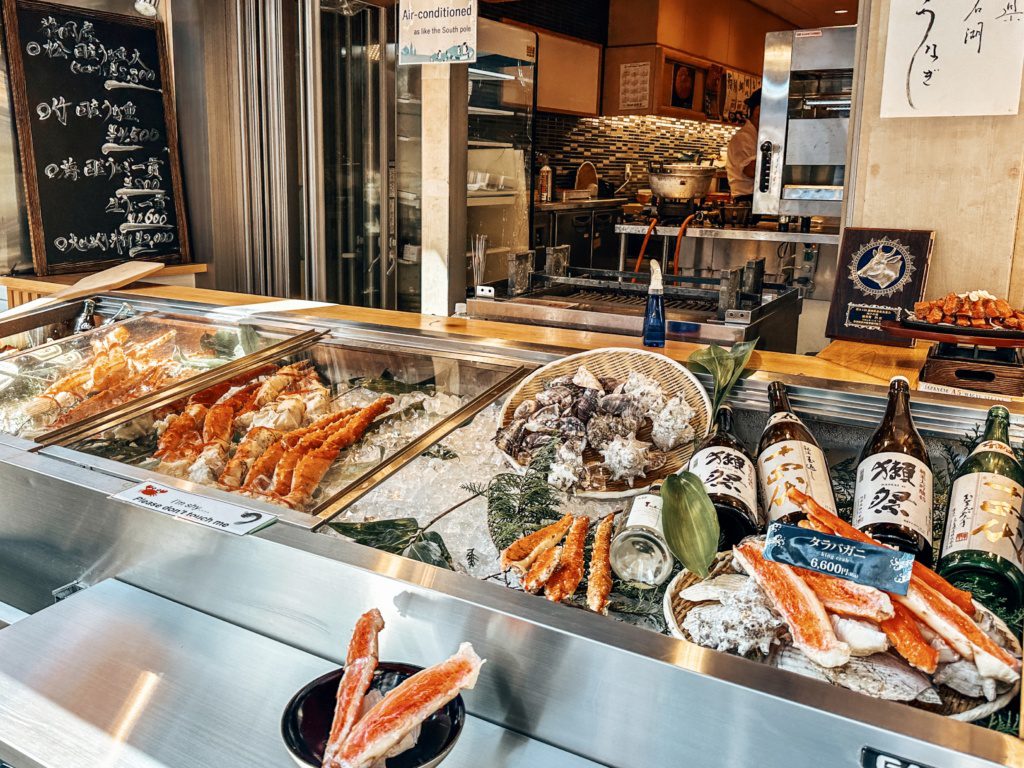
Have you been to Tsukiji Fish Market in Tokyo? Would you add anything else to the Tsukiji Fish Market Guide? Let us know in the comments or tag @eightyflavors on socials!
OUR TRIED AND TESTED FOOD TRAVEL RESOURCES: Book a hotel with Booking.com. Search for the best flight deals on Skyscanner. Find the best local food tours on Viator. Browse curated conscious group trips with GAdventures. Get your travel insurance with World Nomads.
Disclaimer: this post contains affiliate links. We’ll receive a small commission if you purchase through the link provided, at no extra cost to you. Thank you for your support in running this blog!

